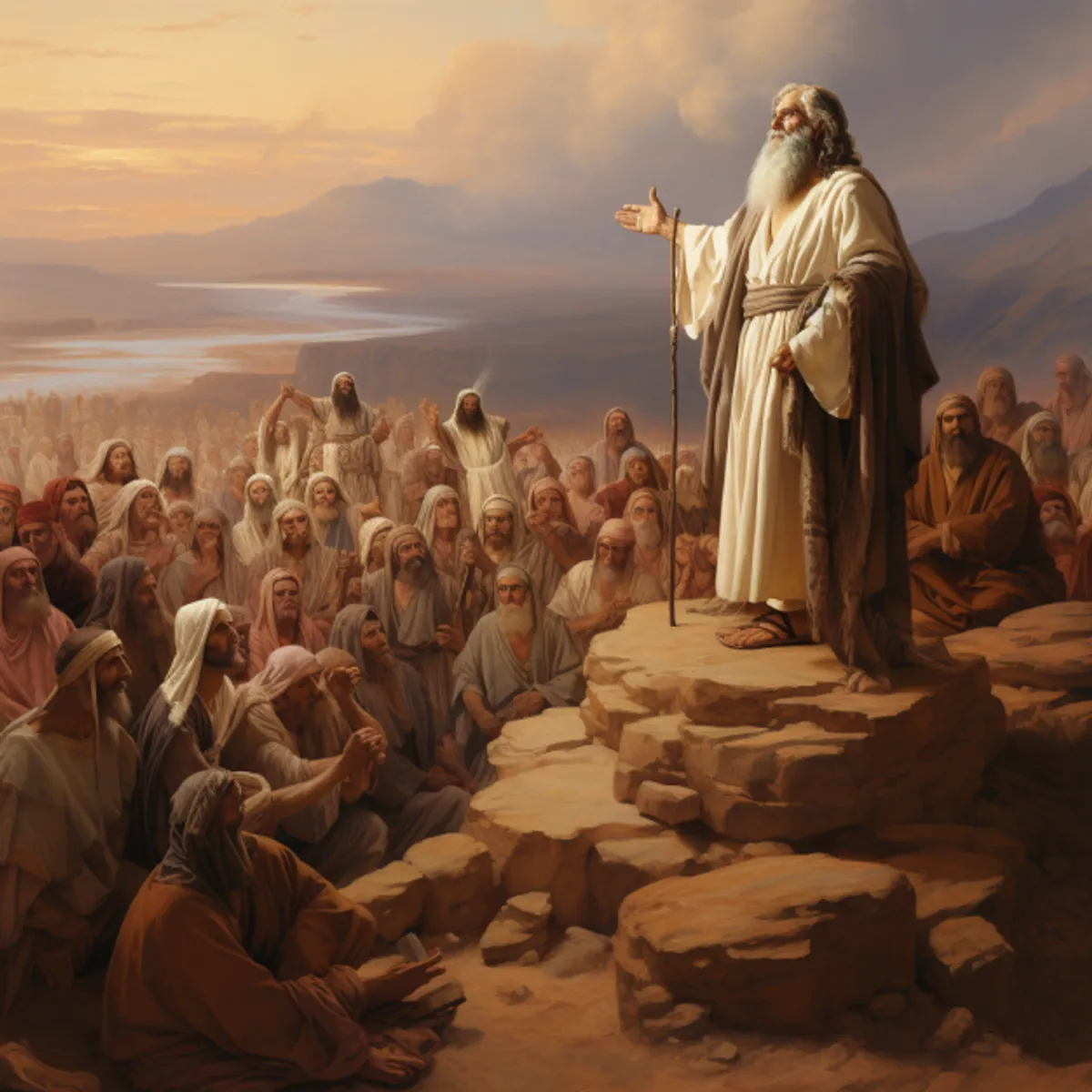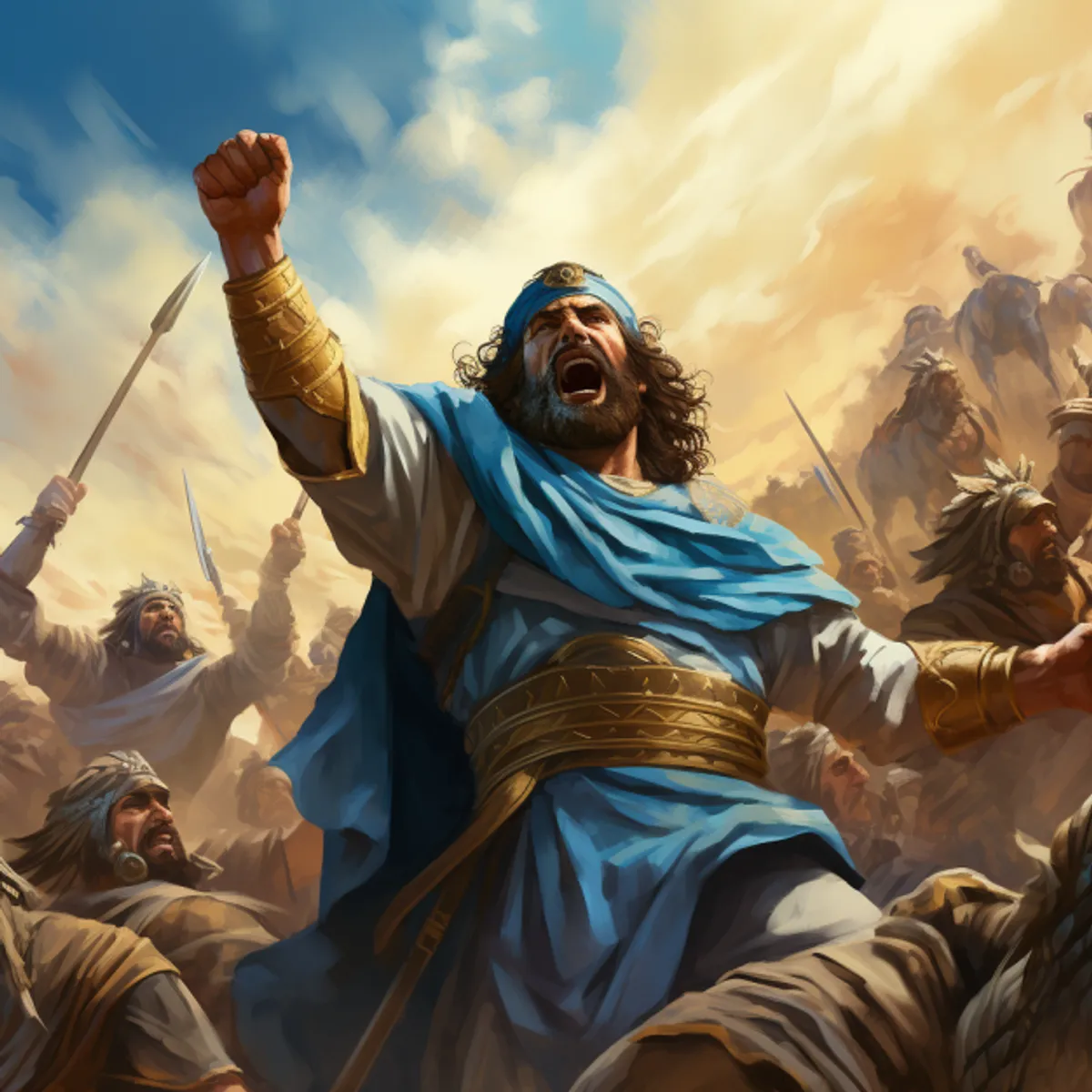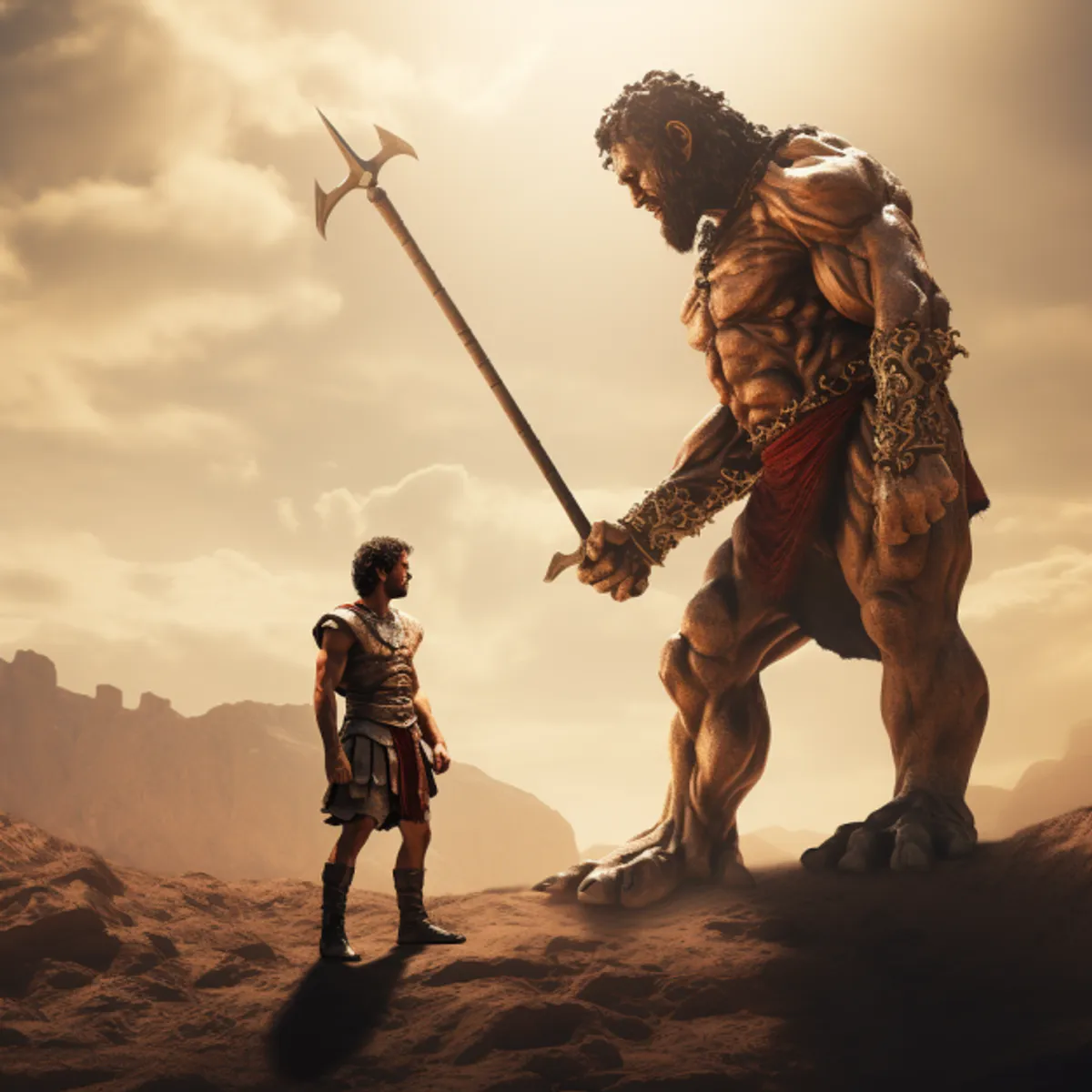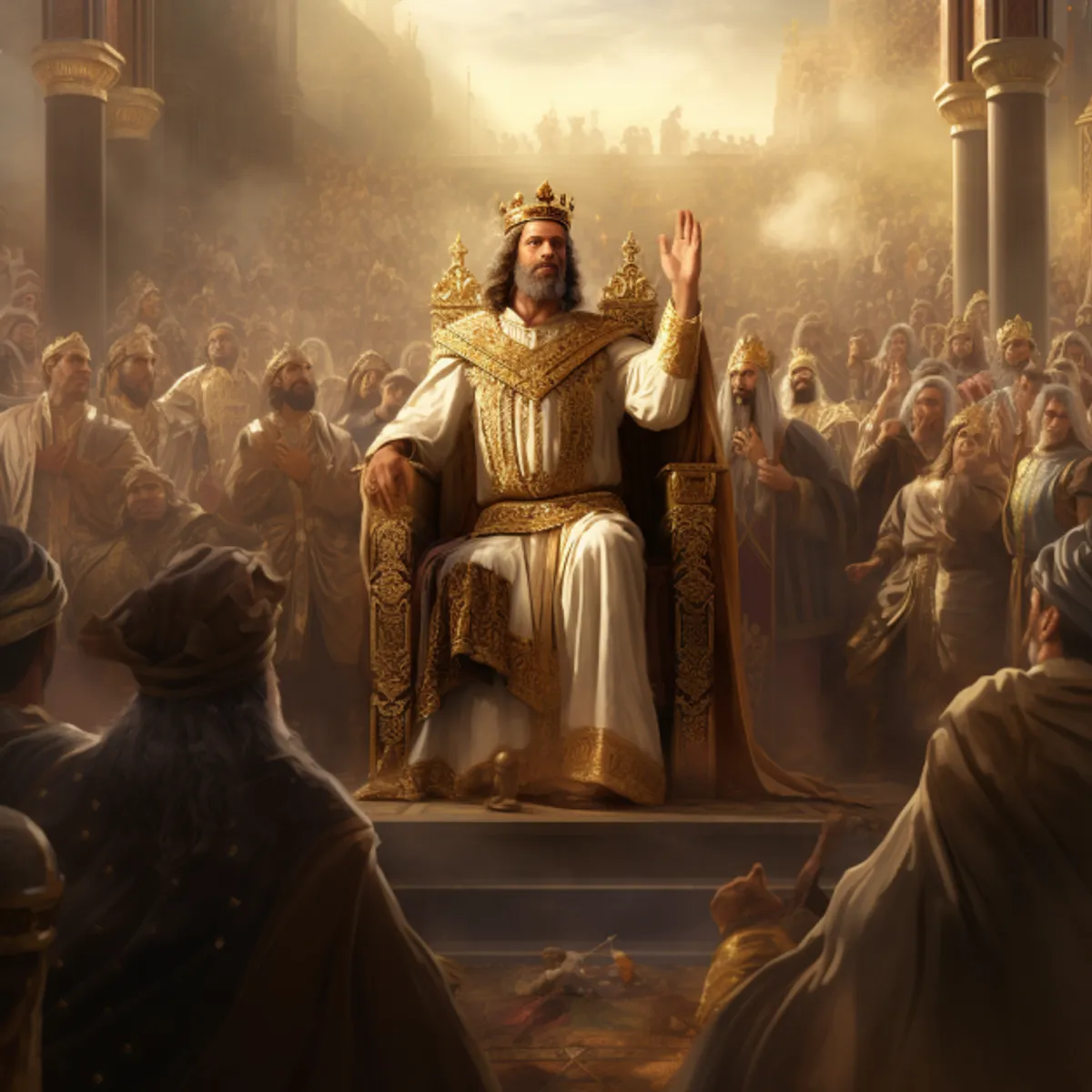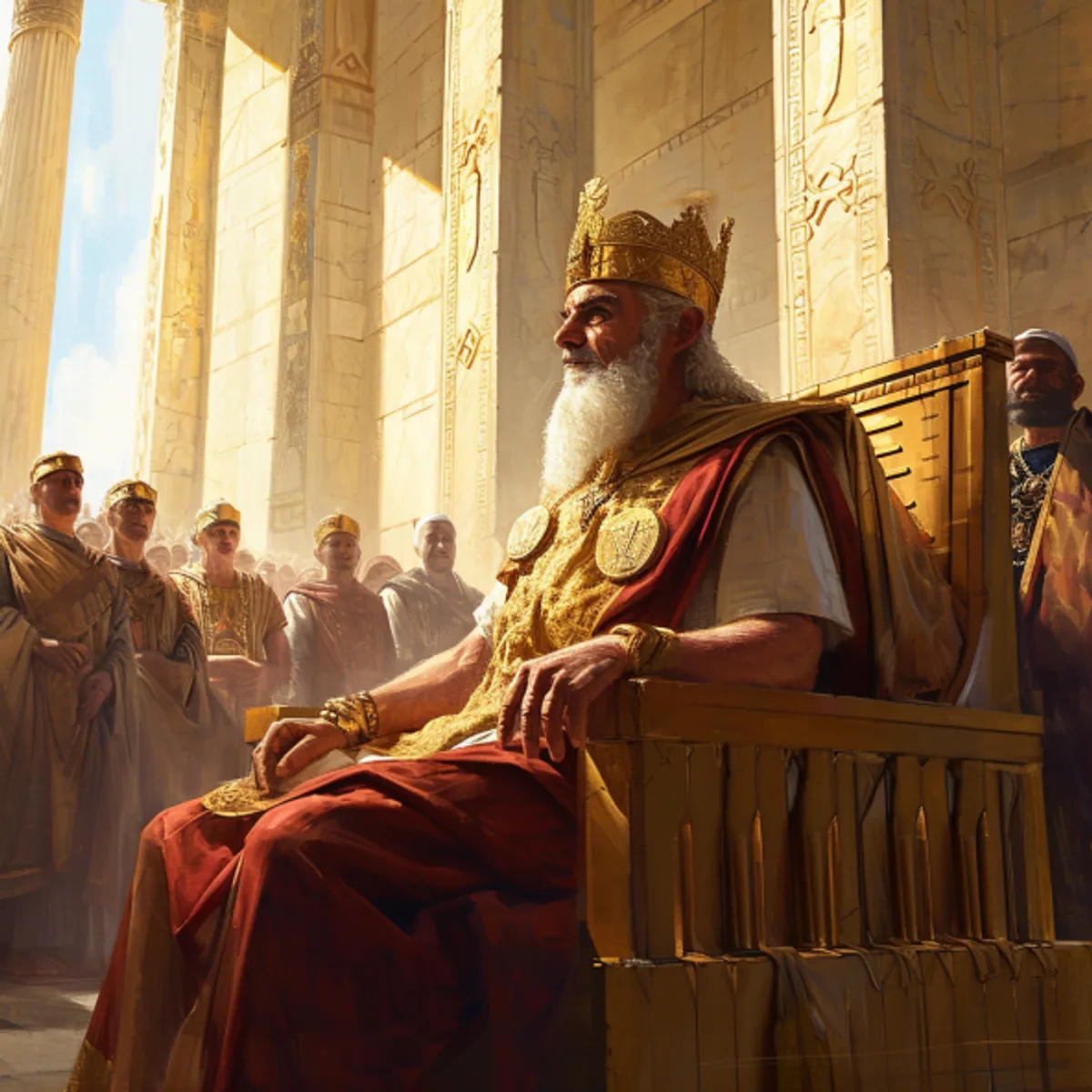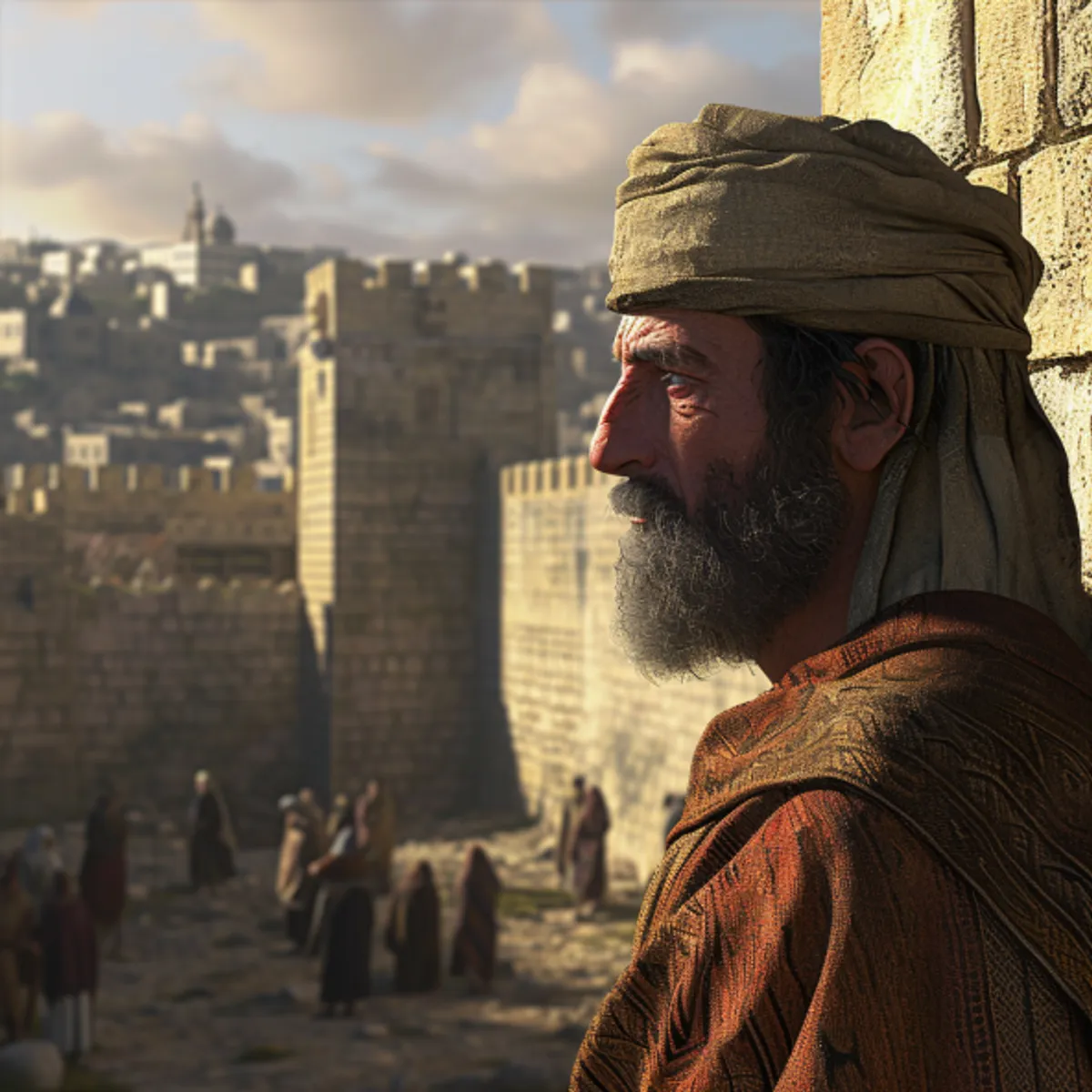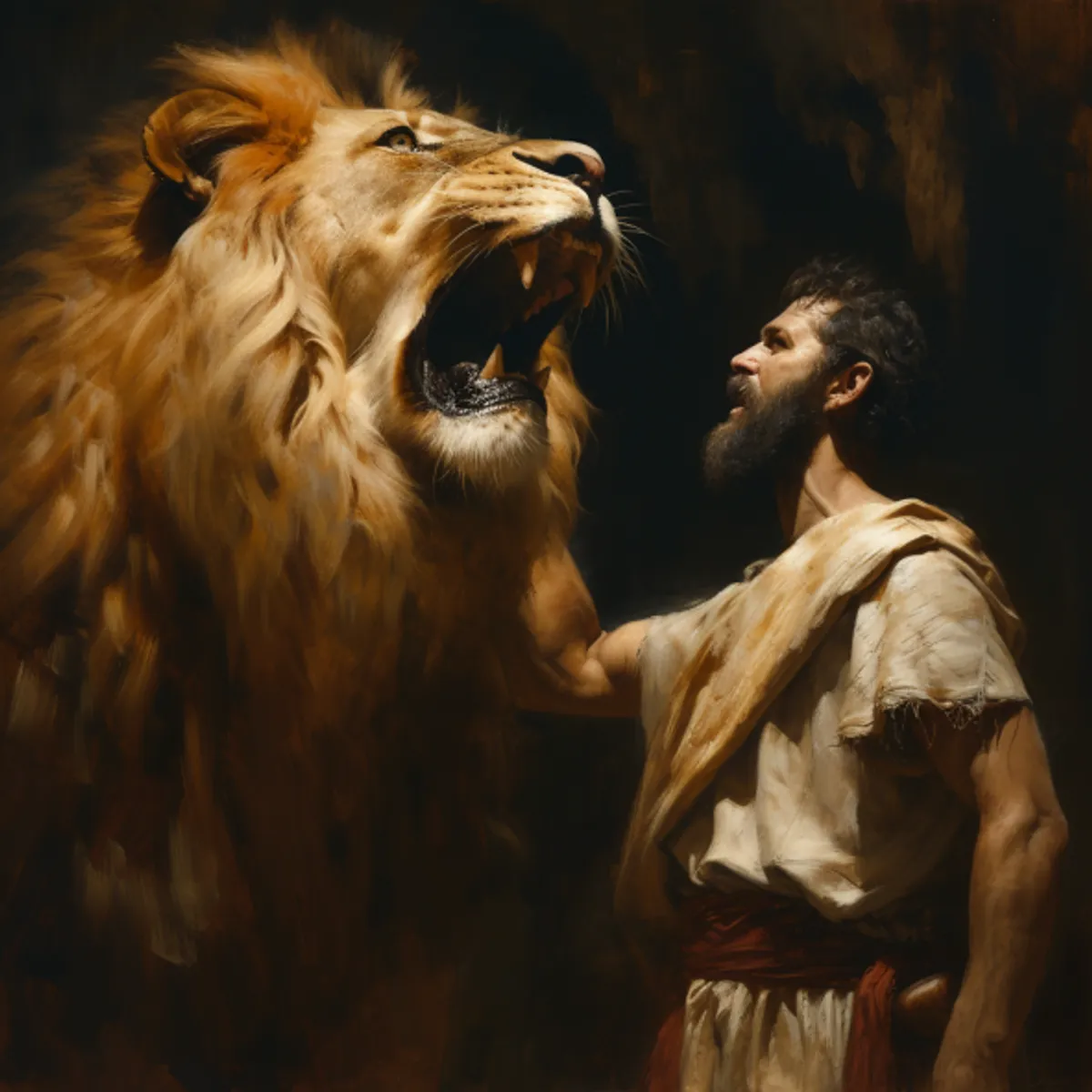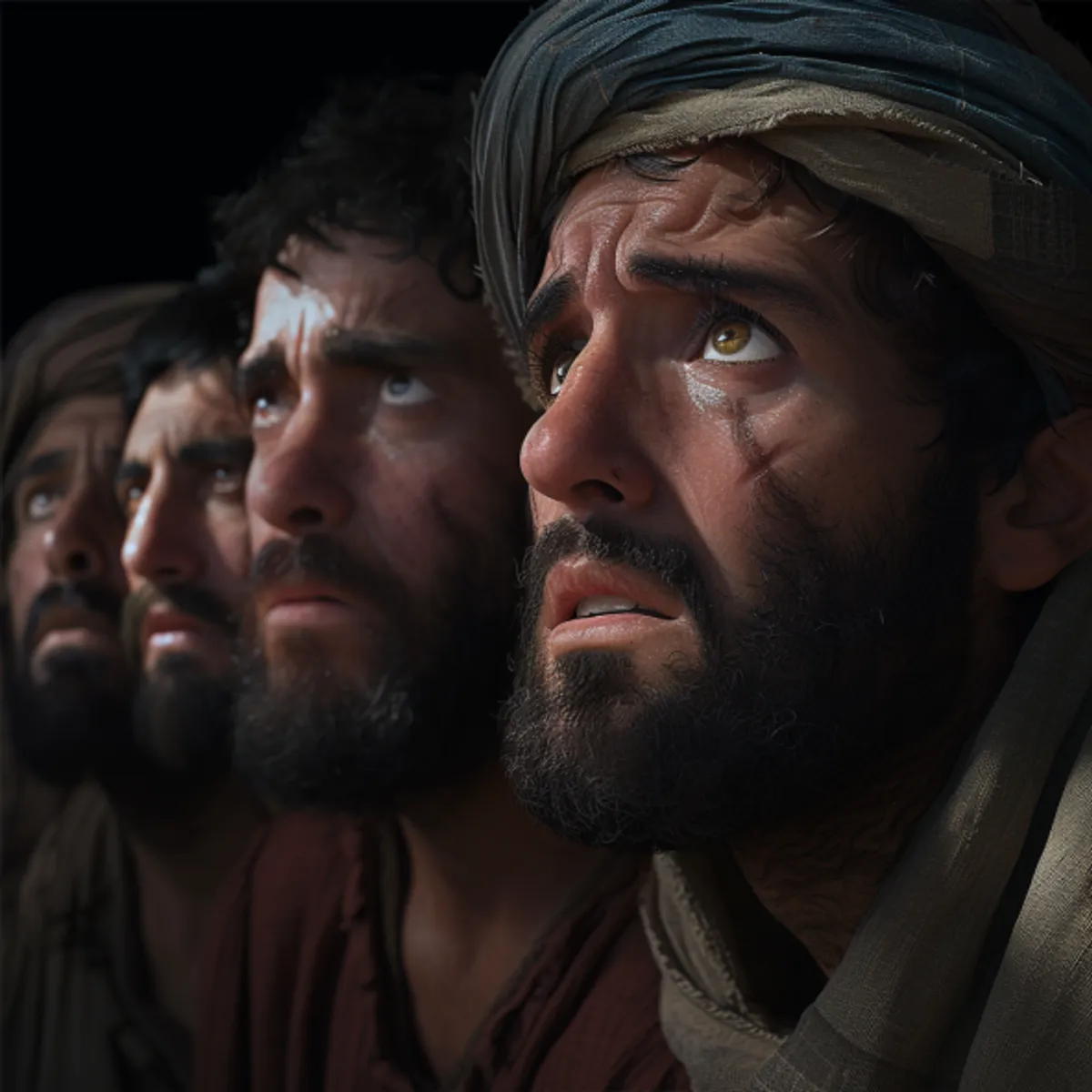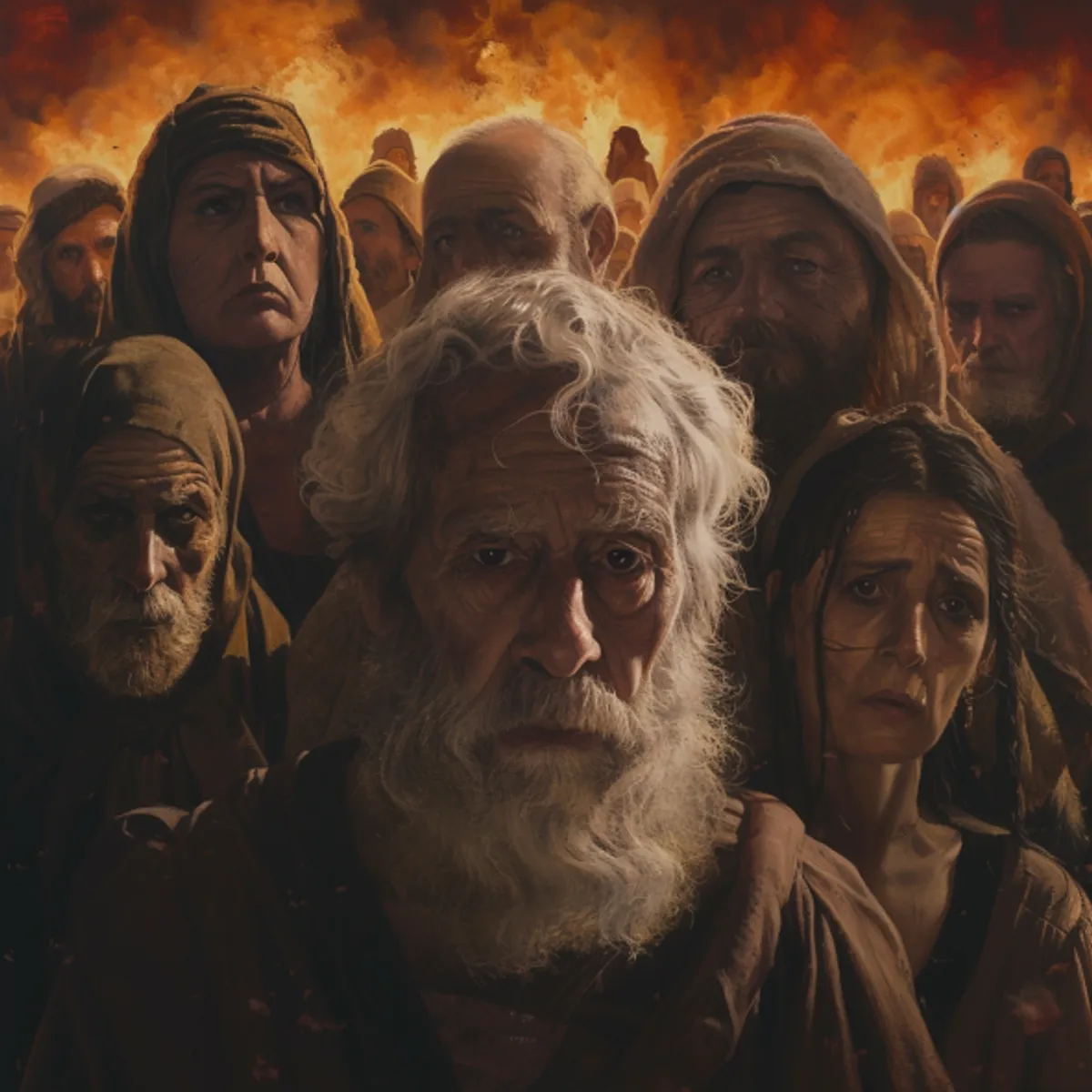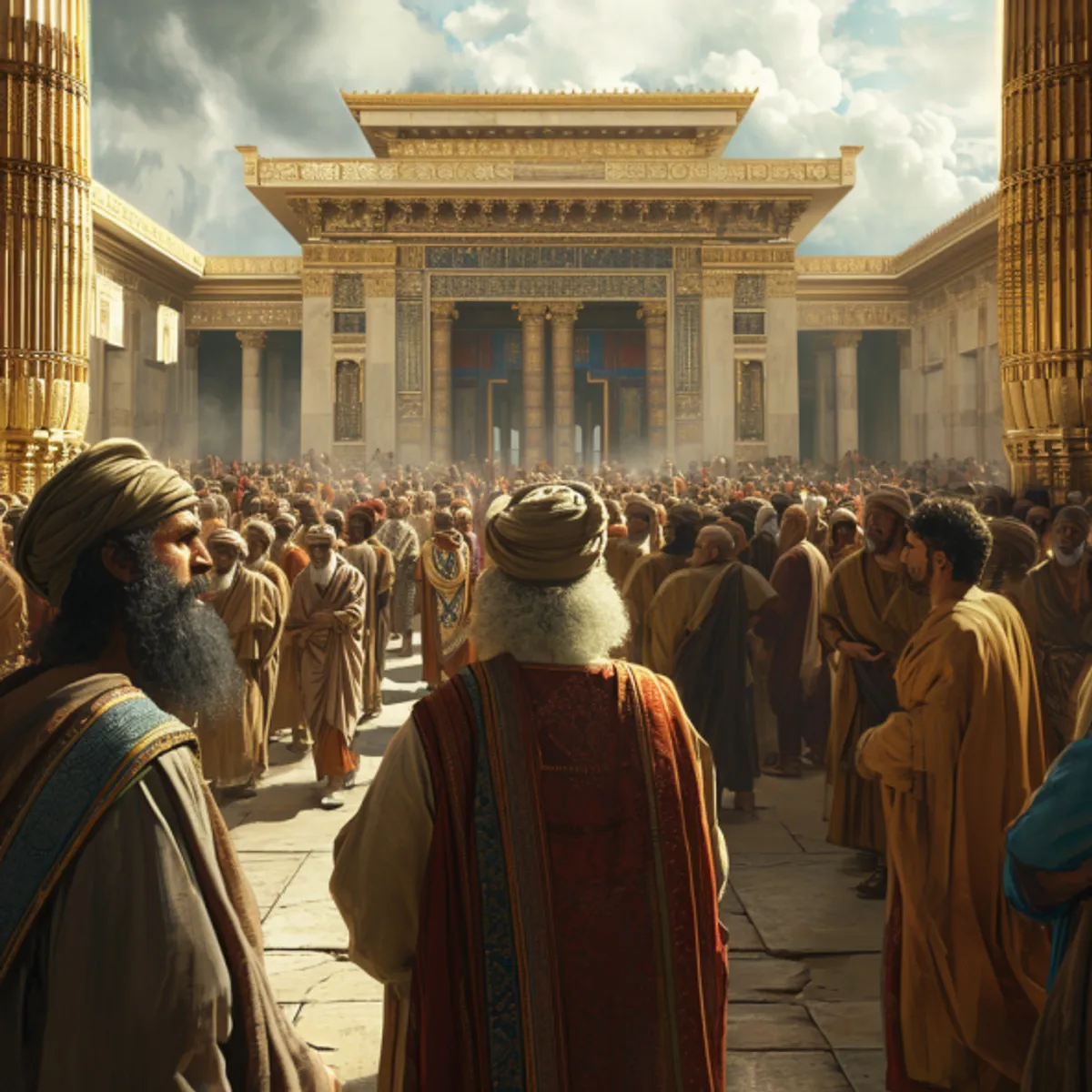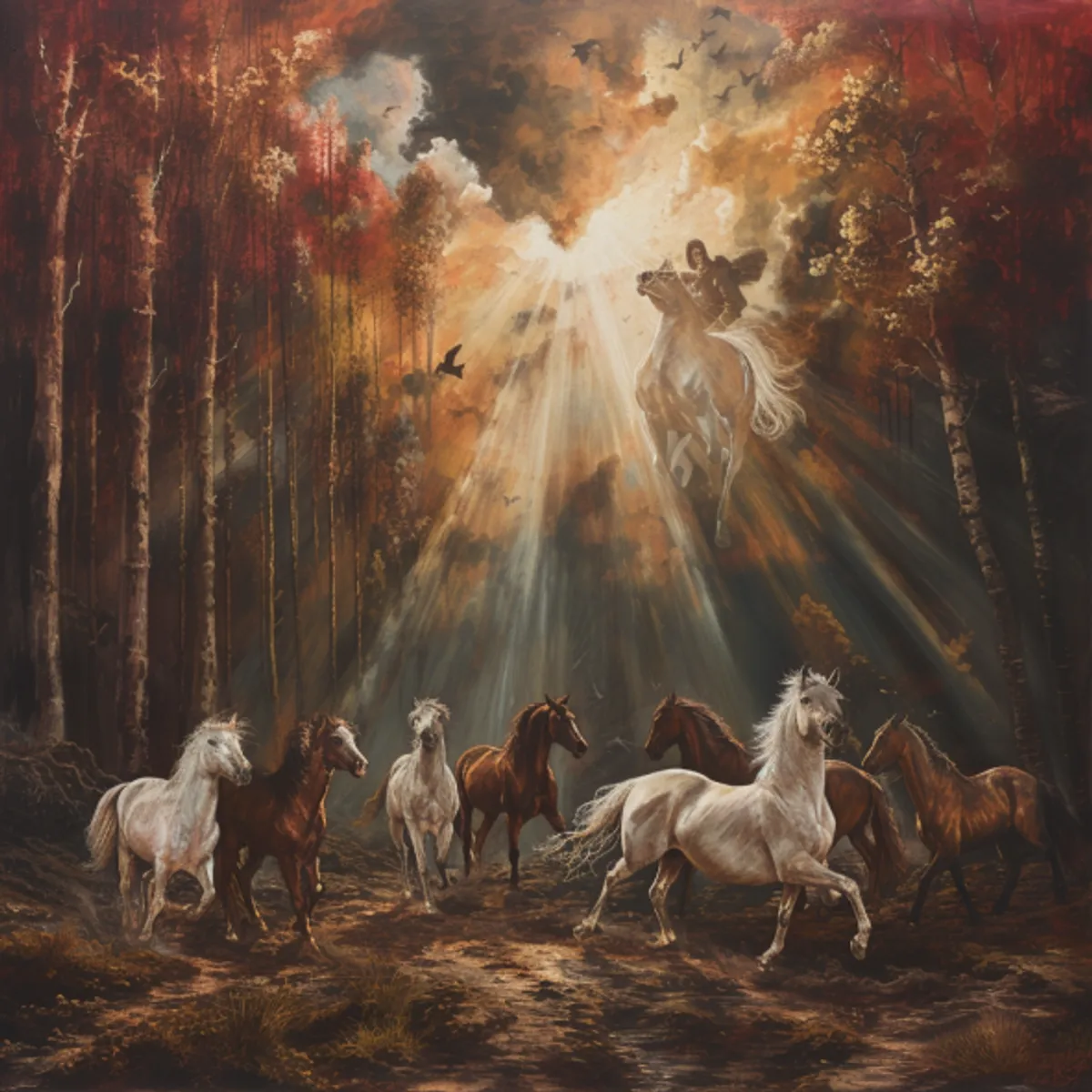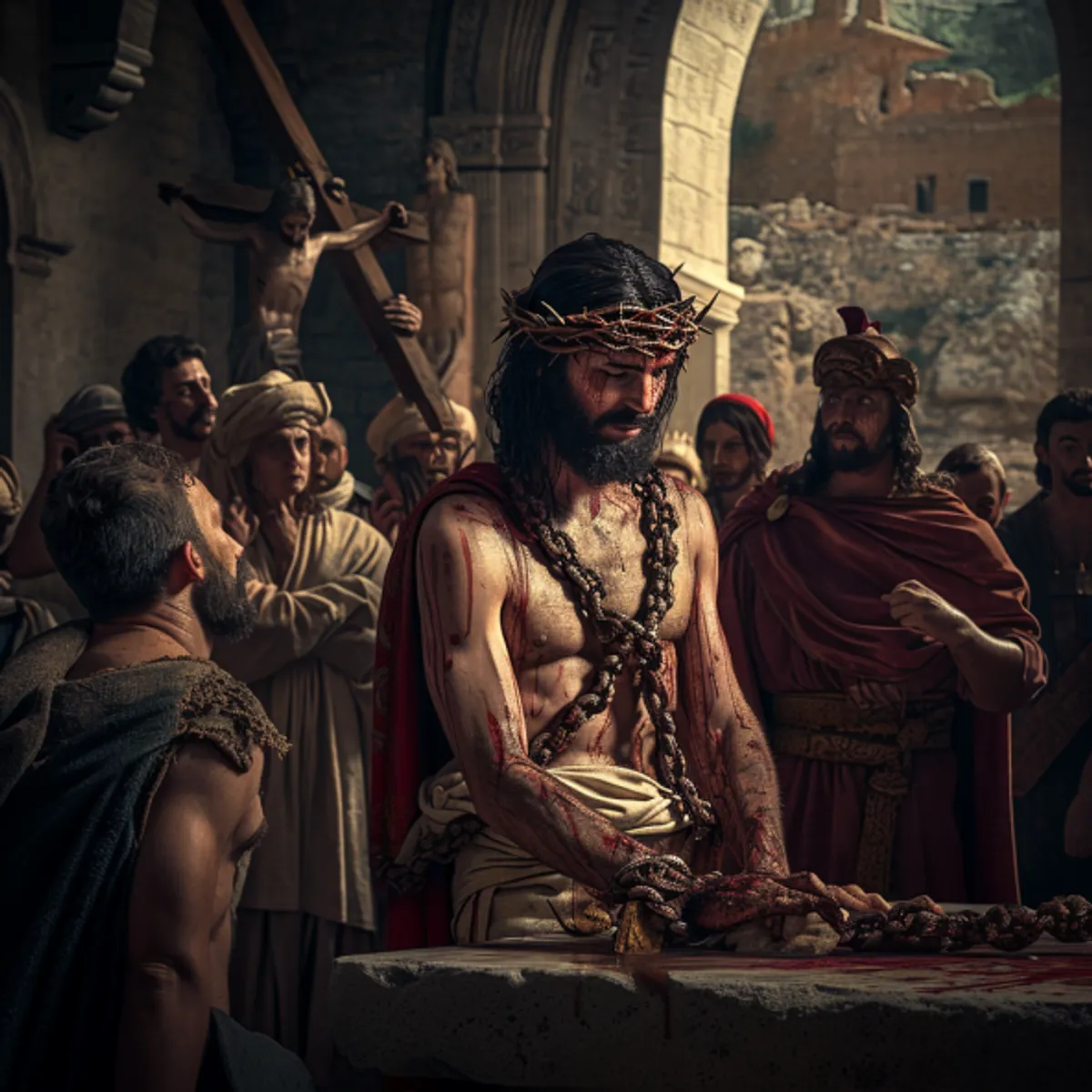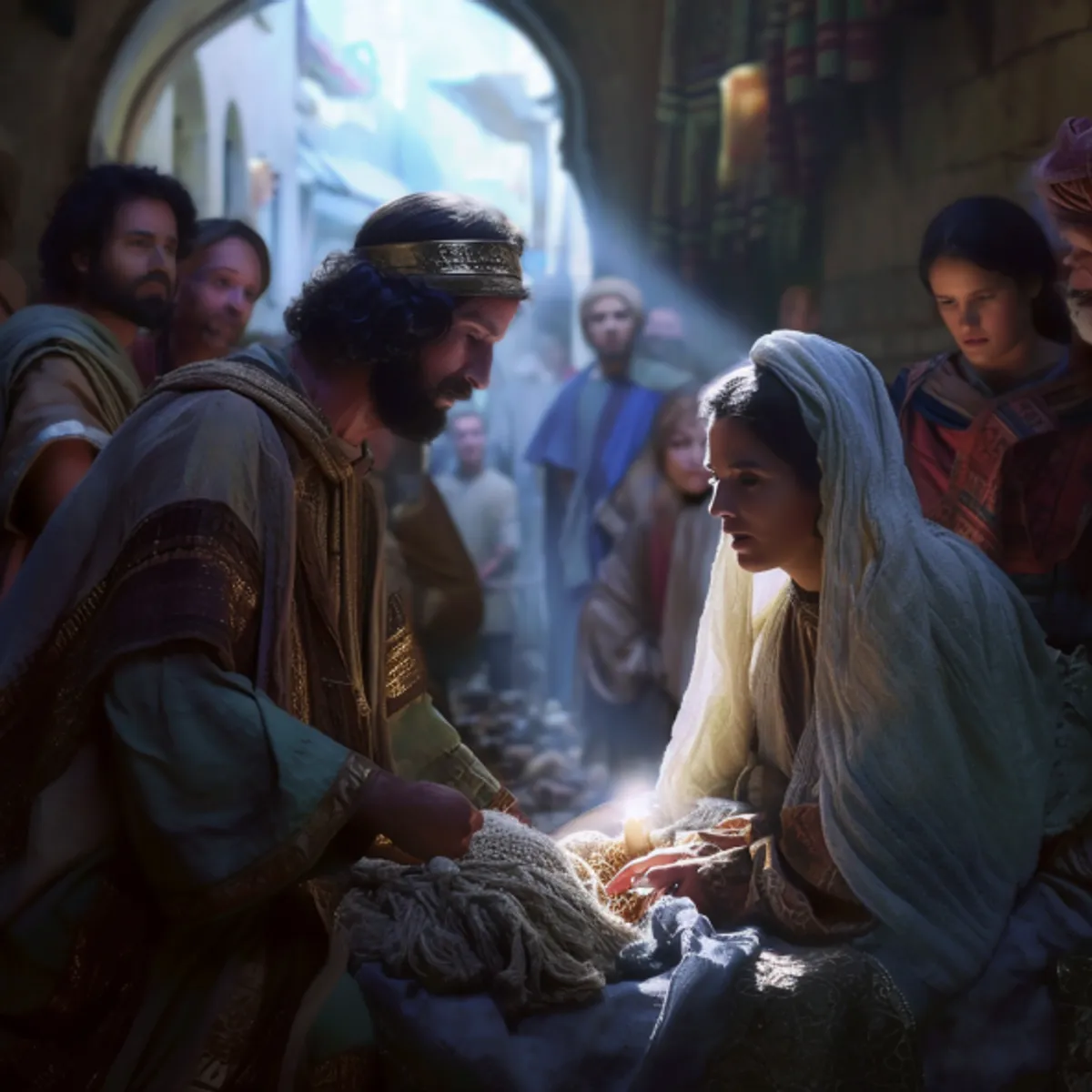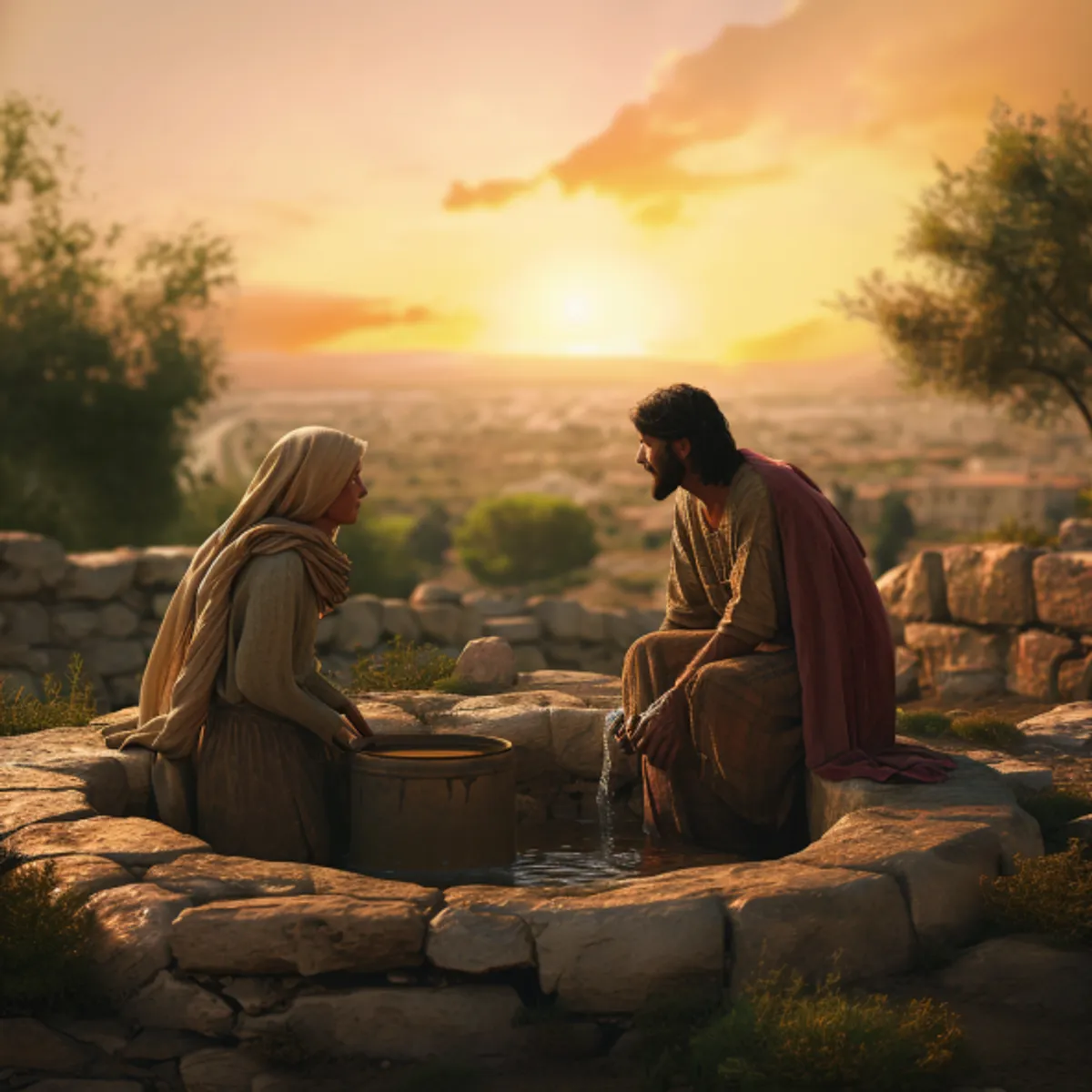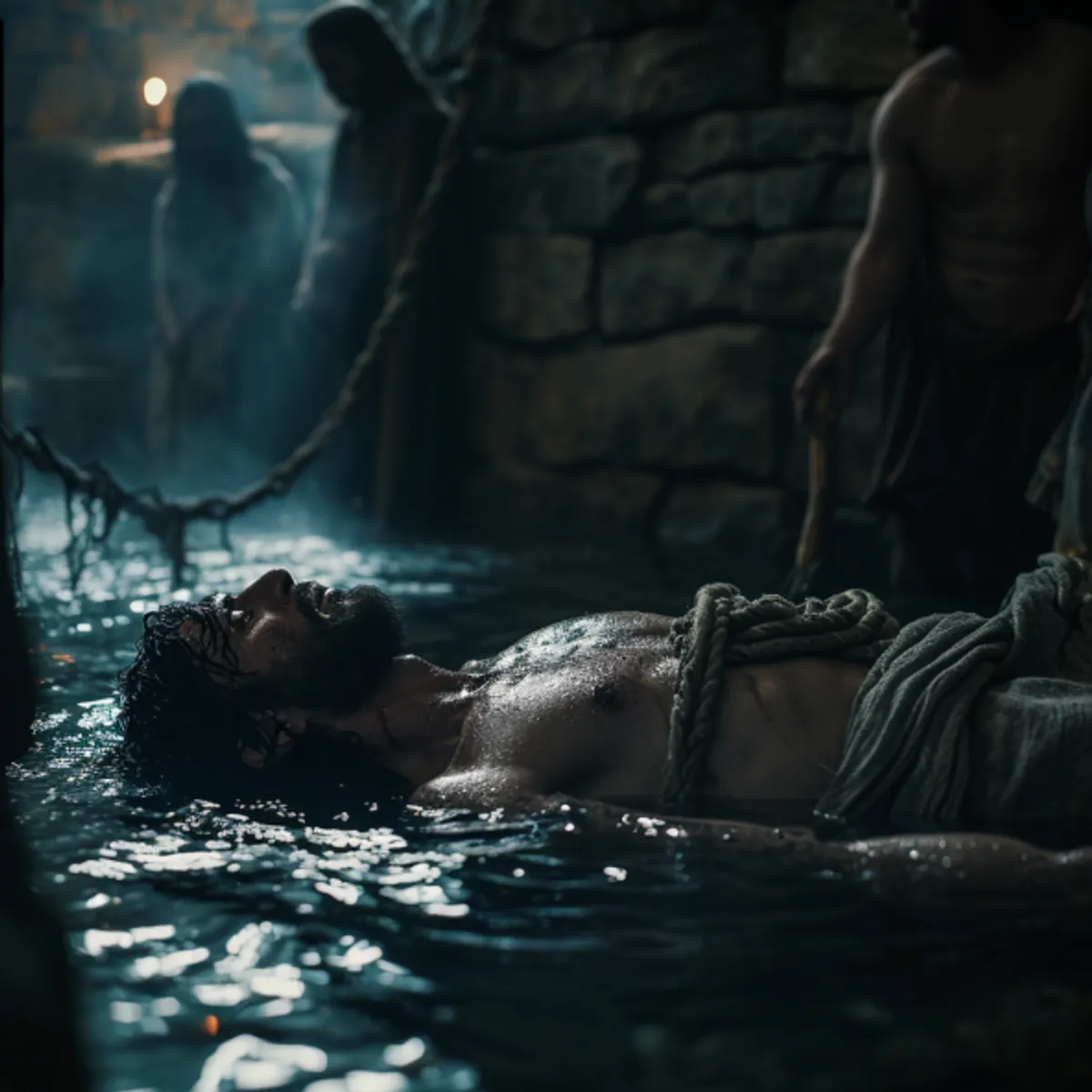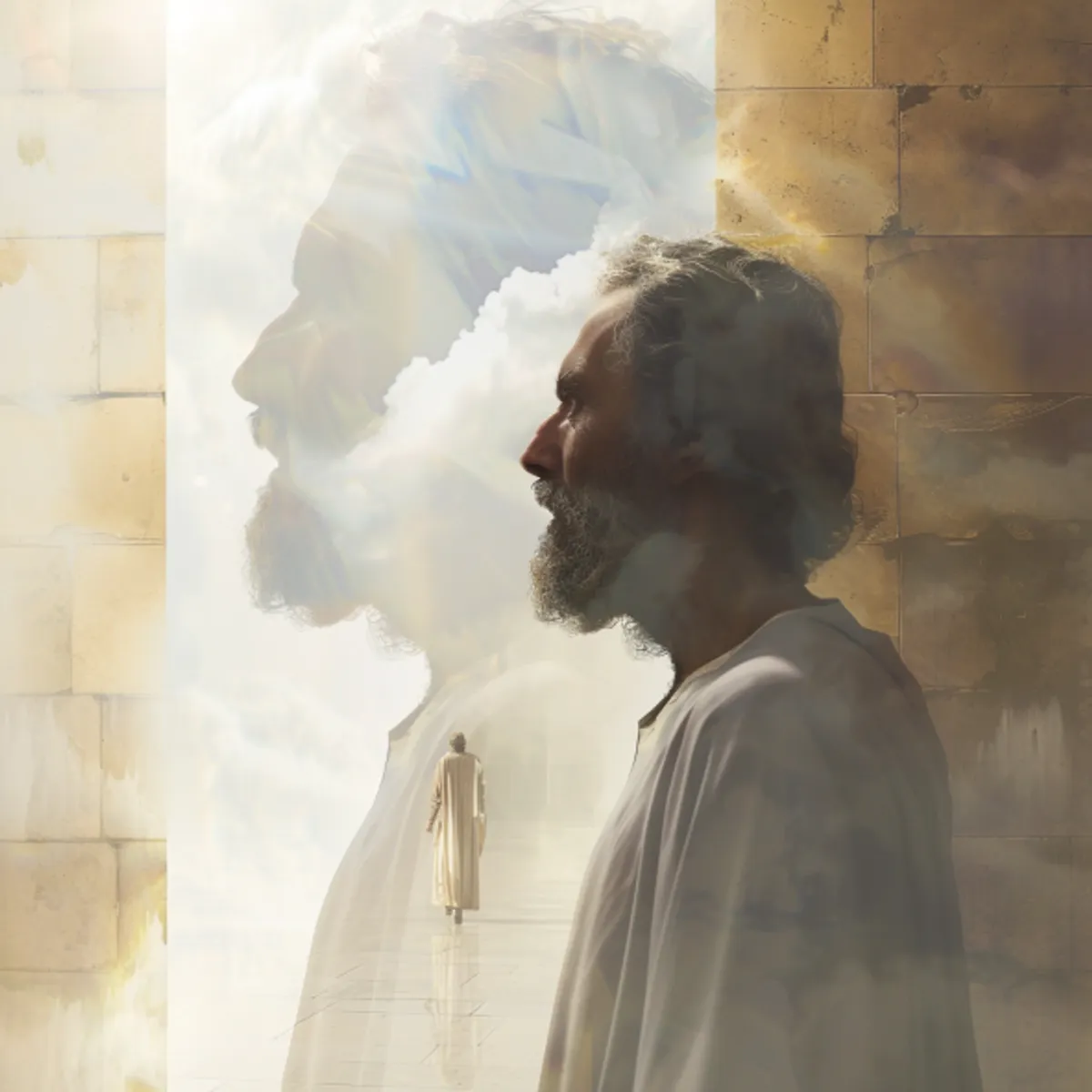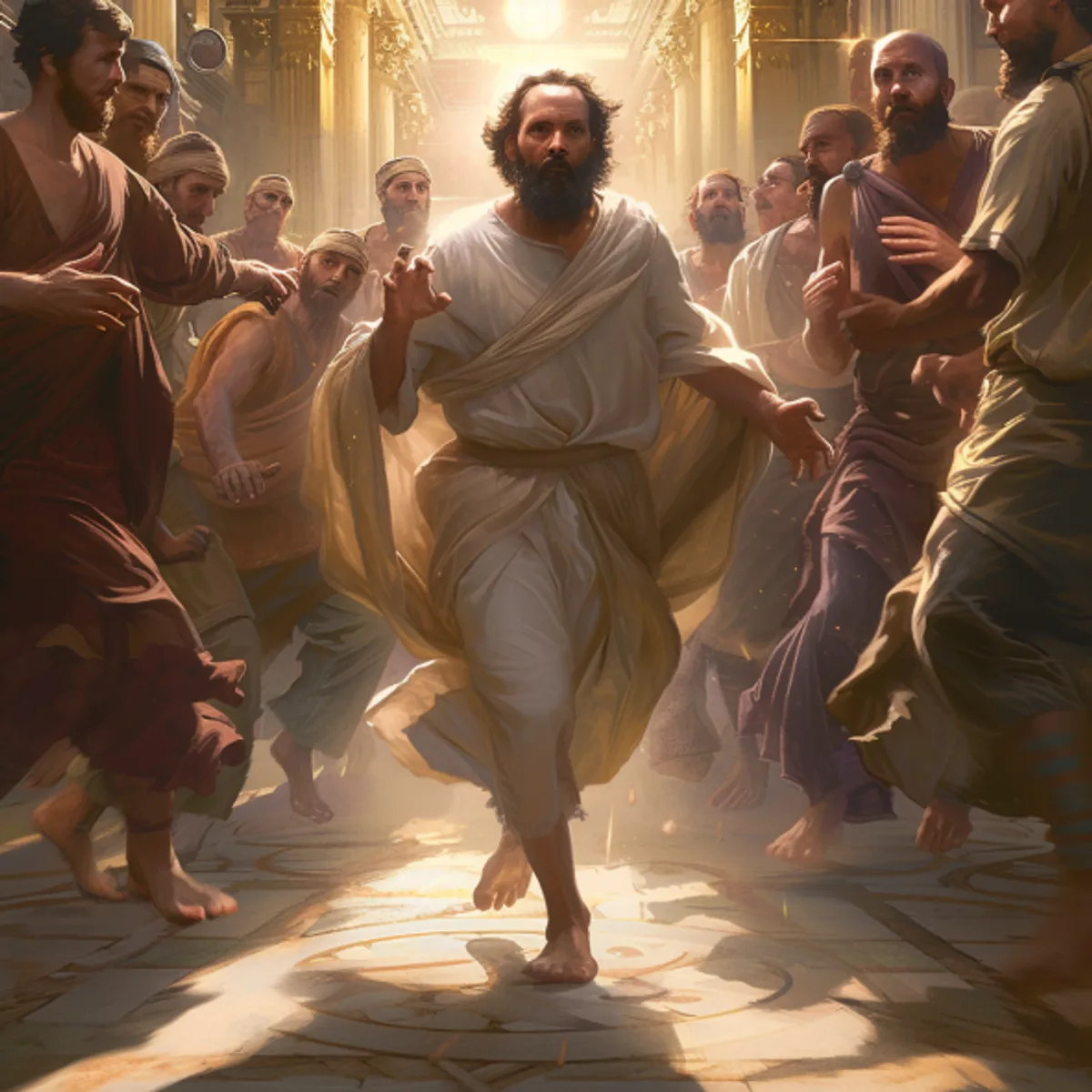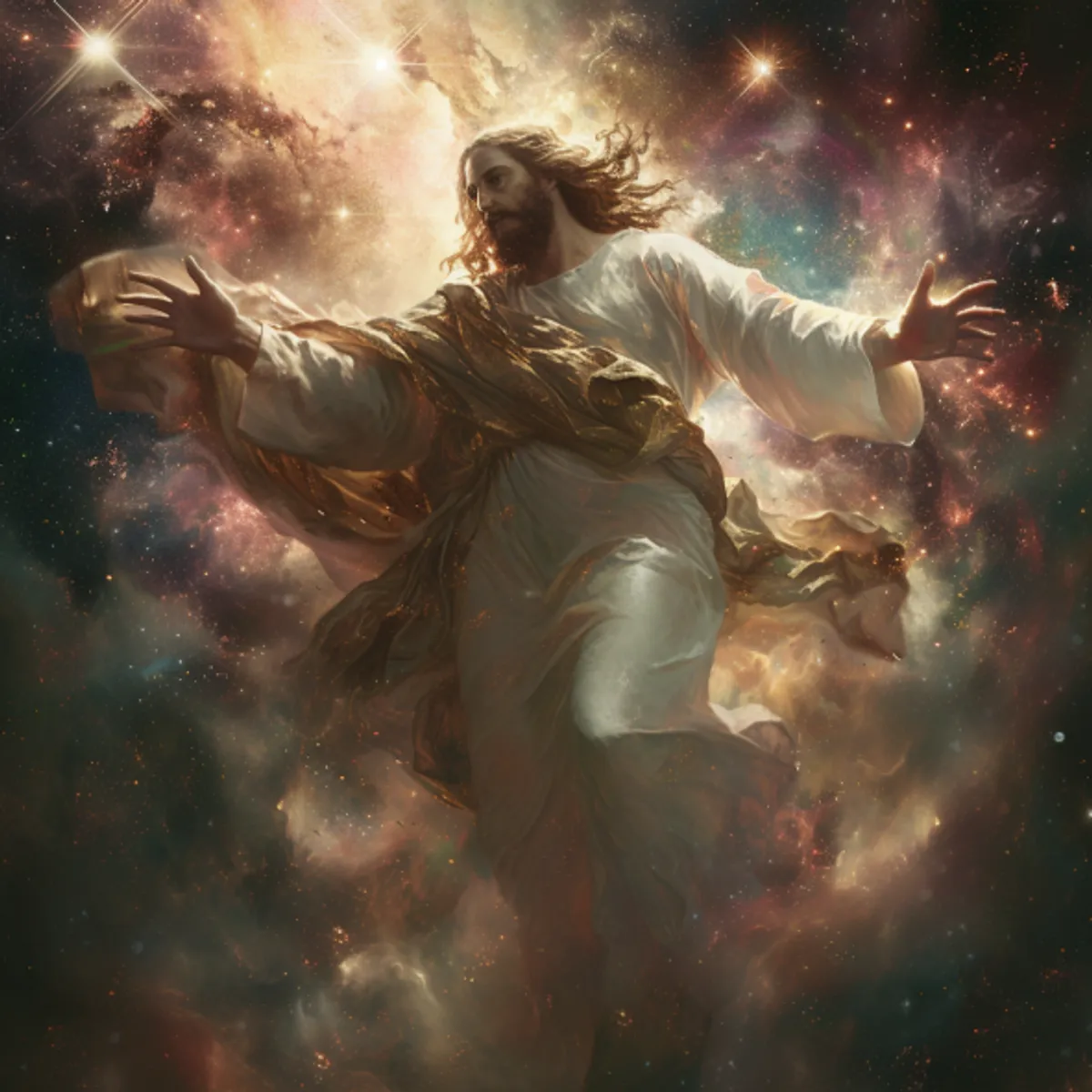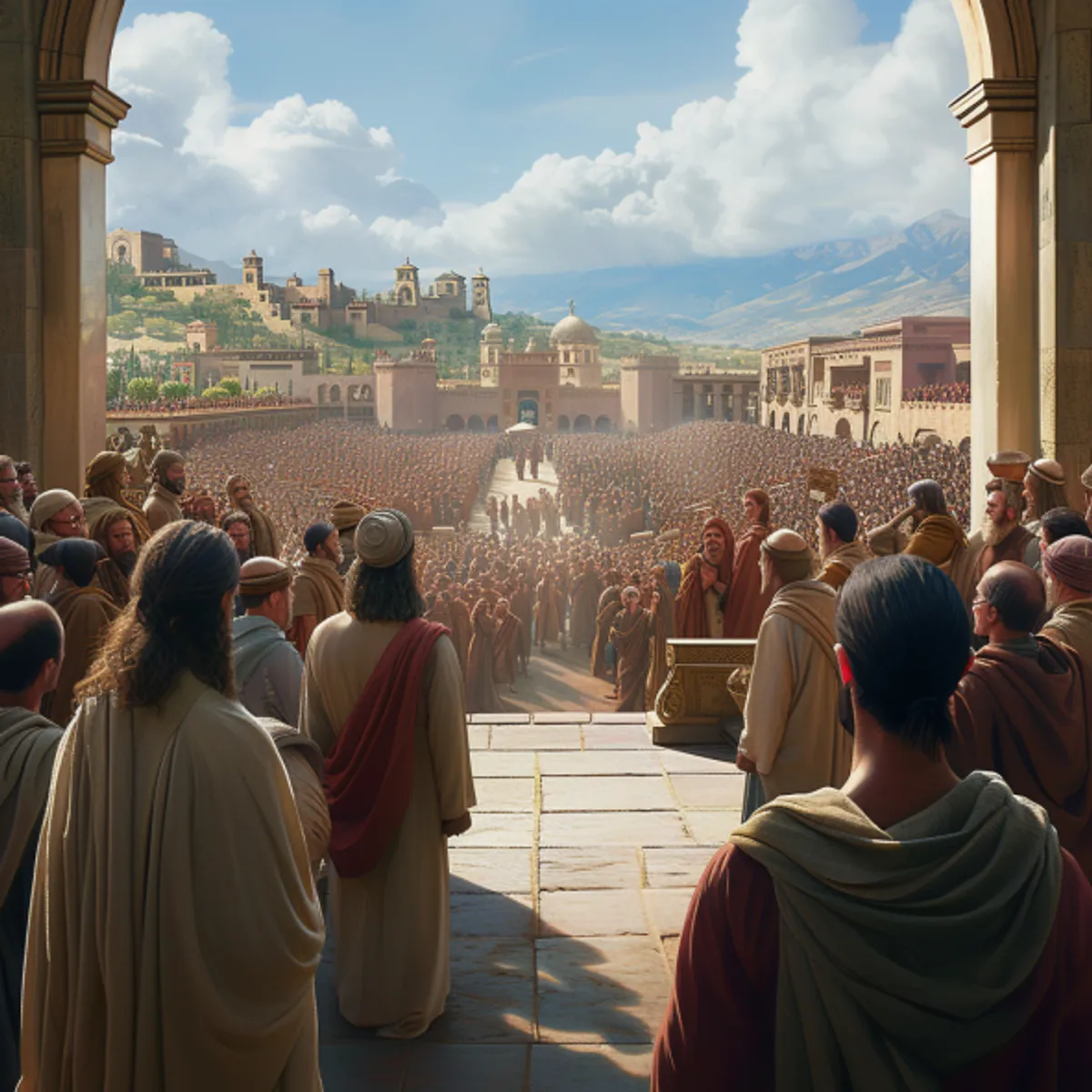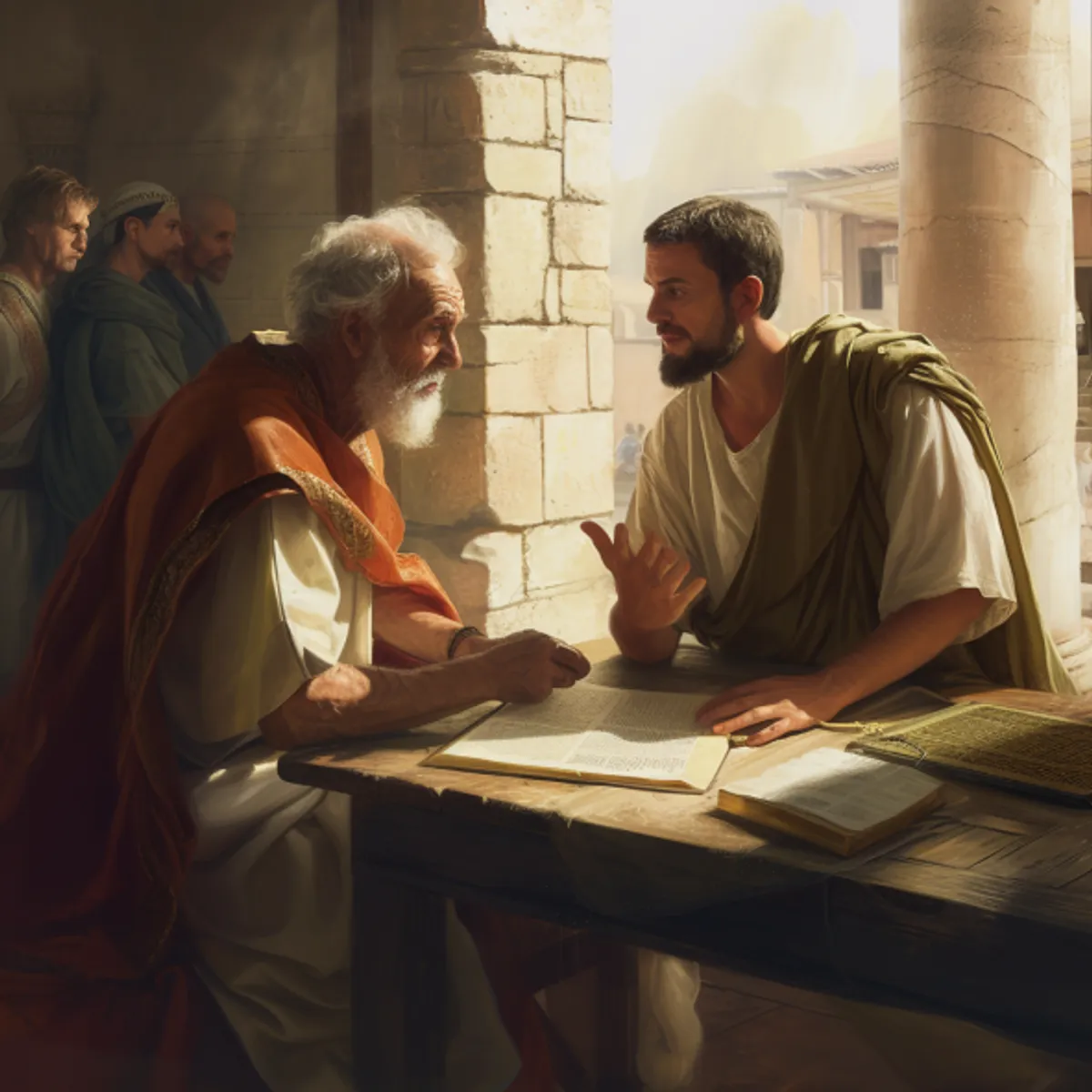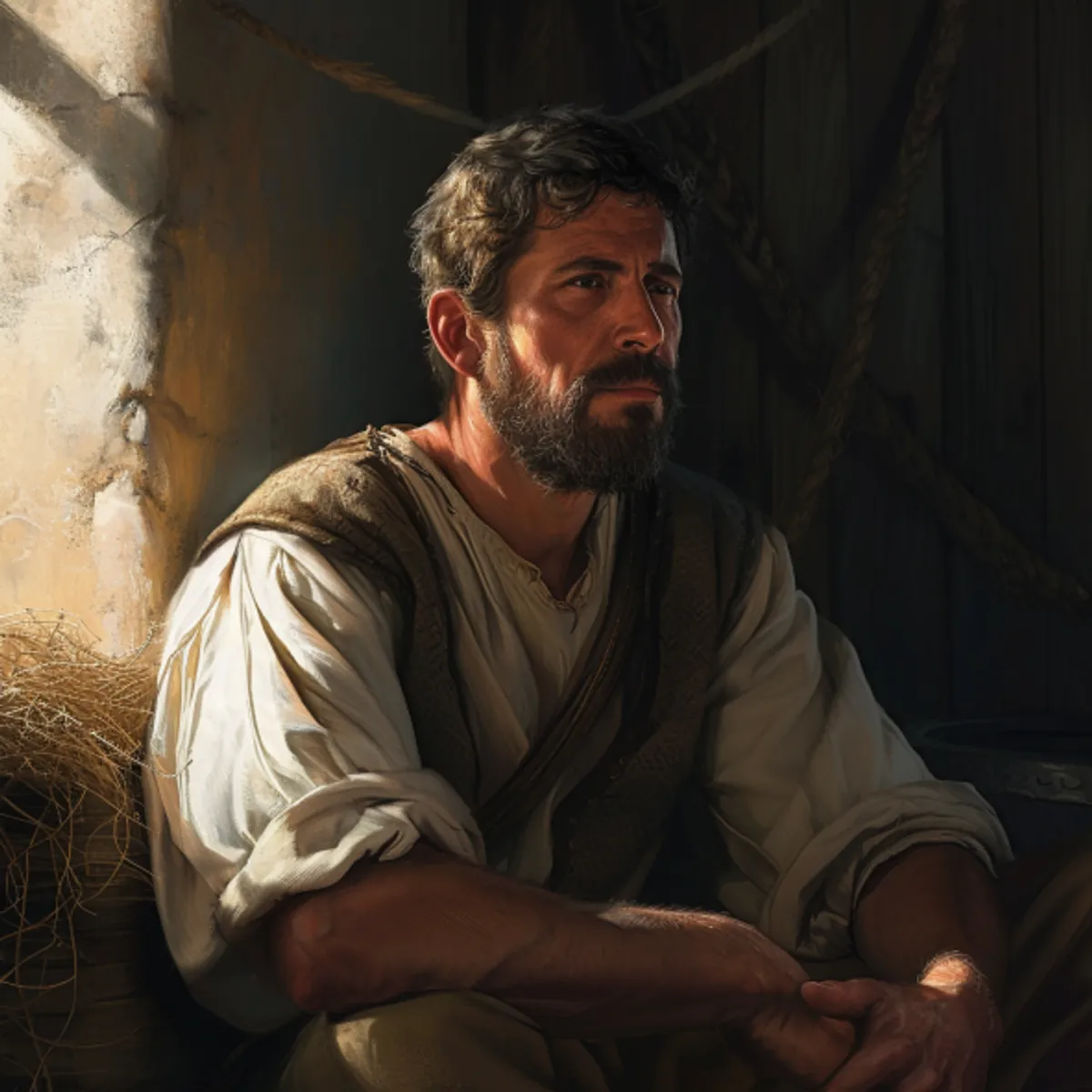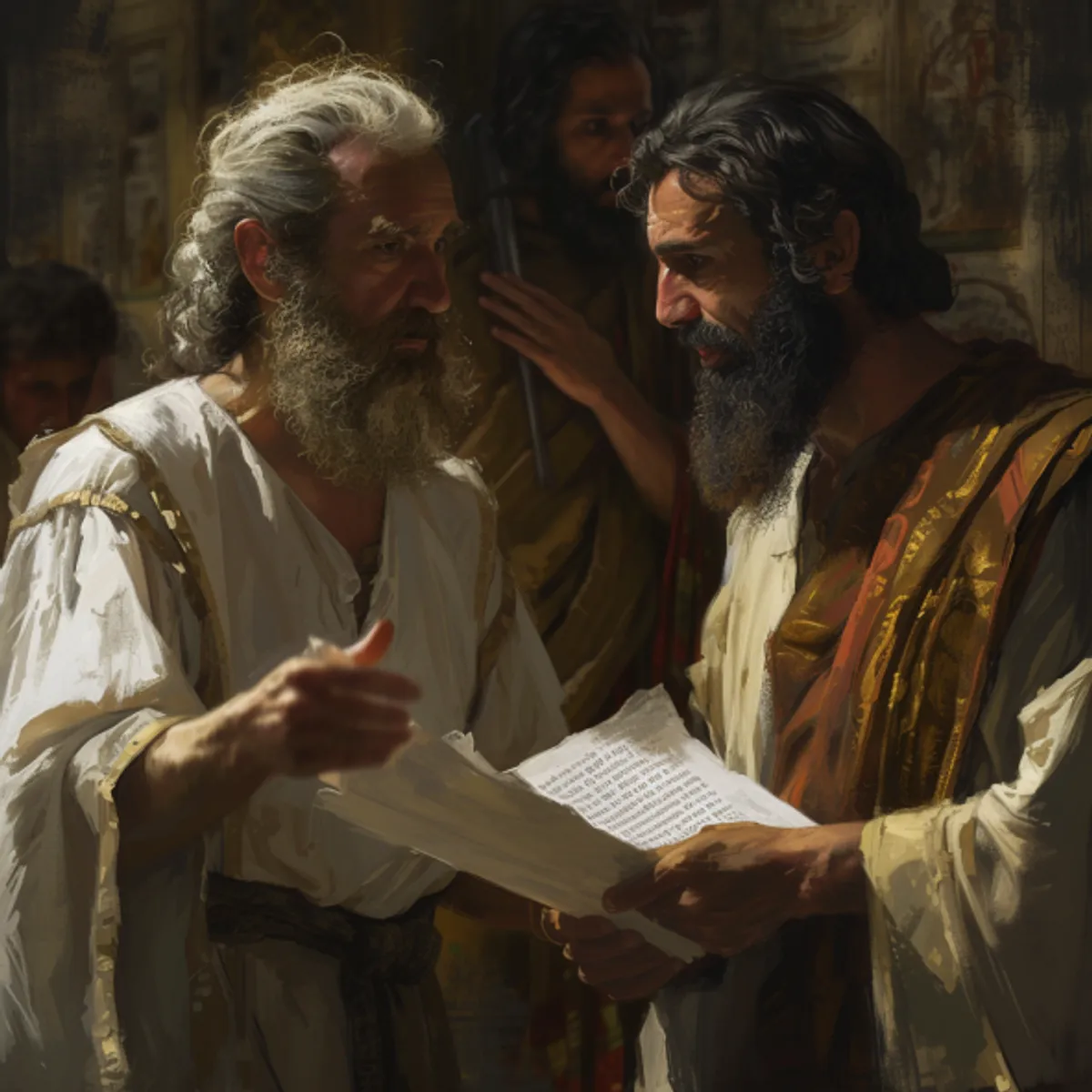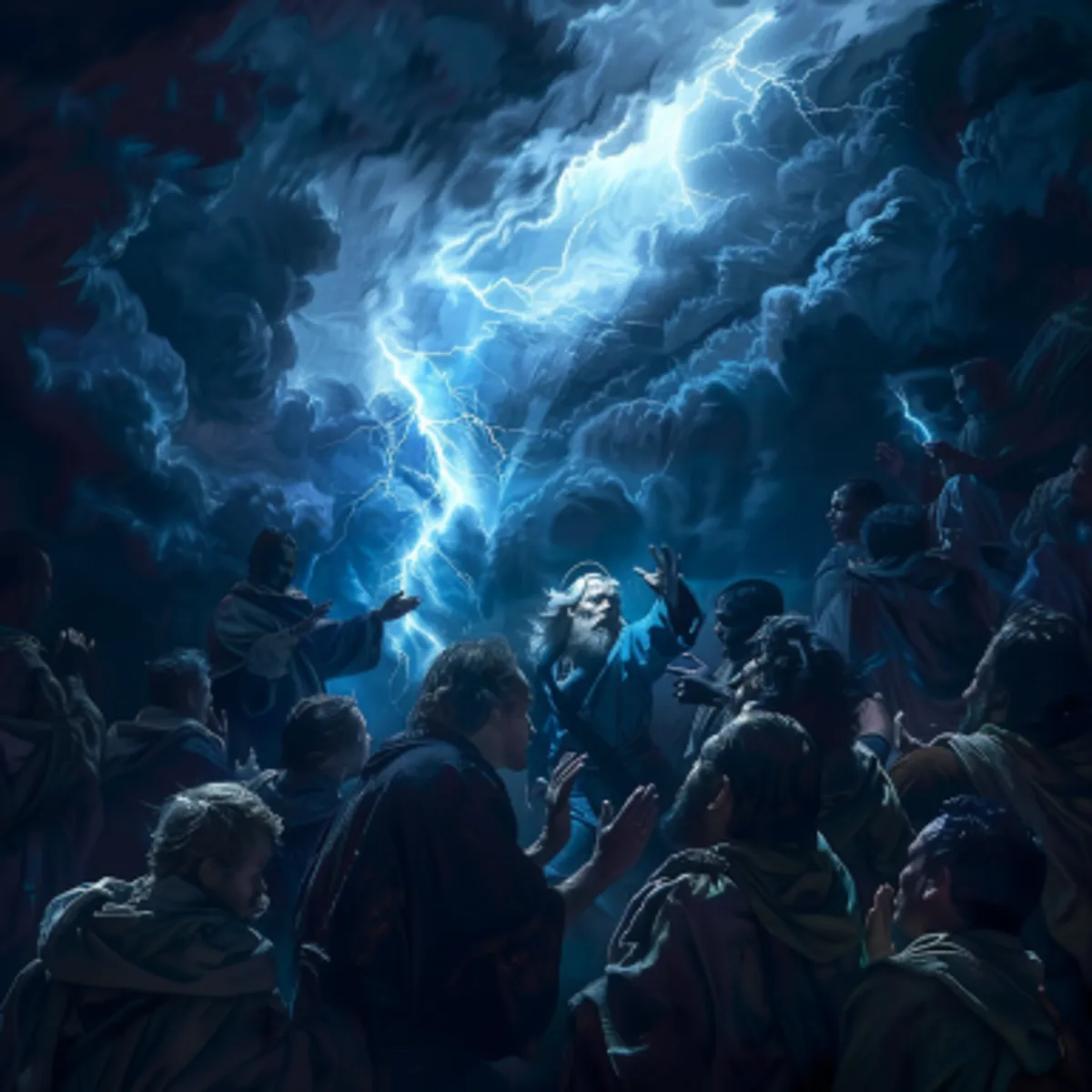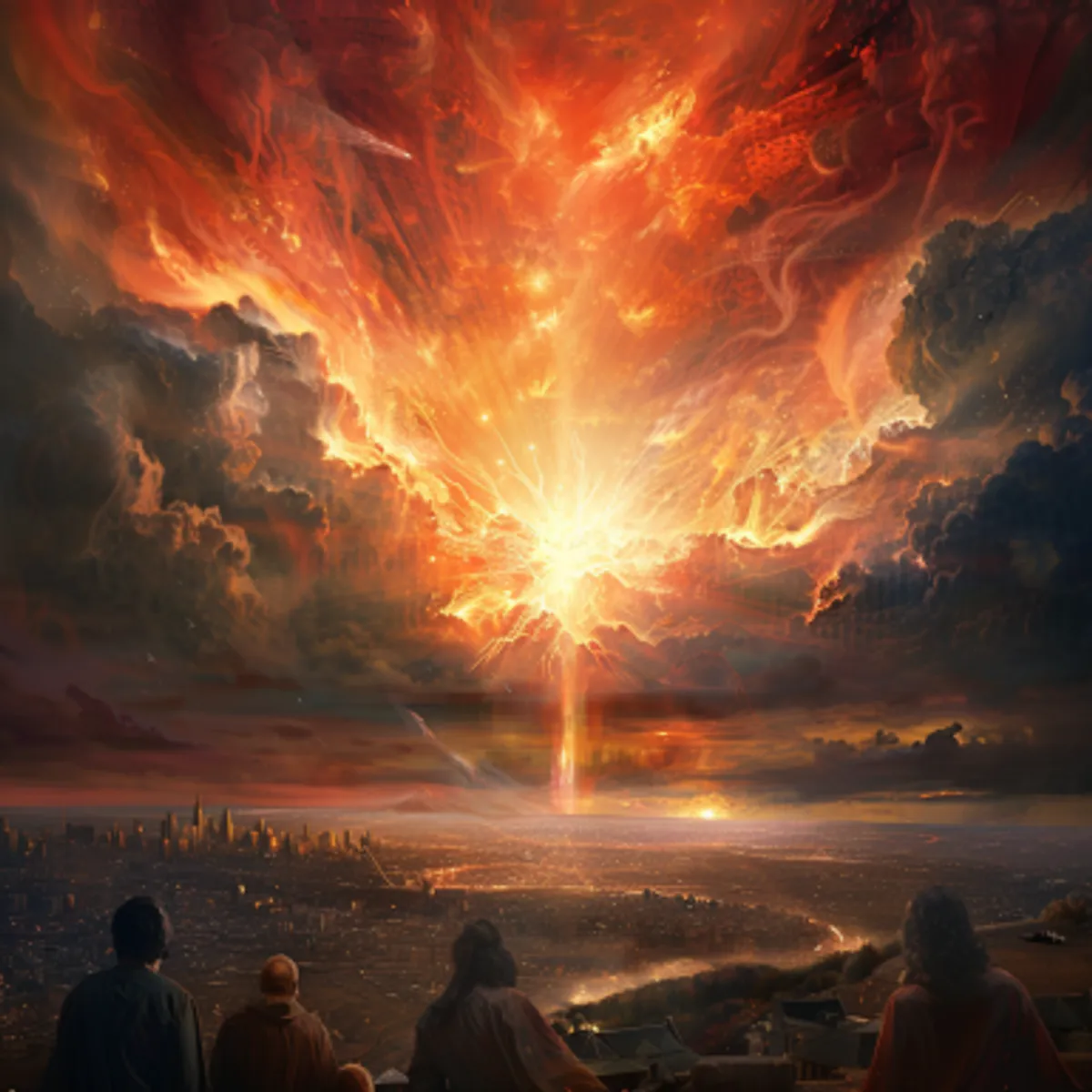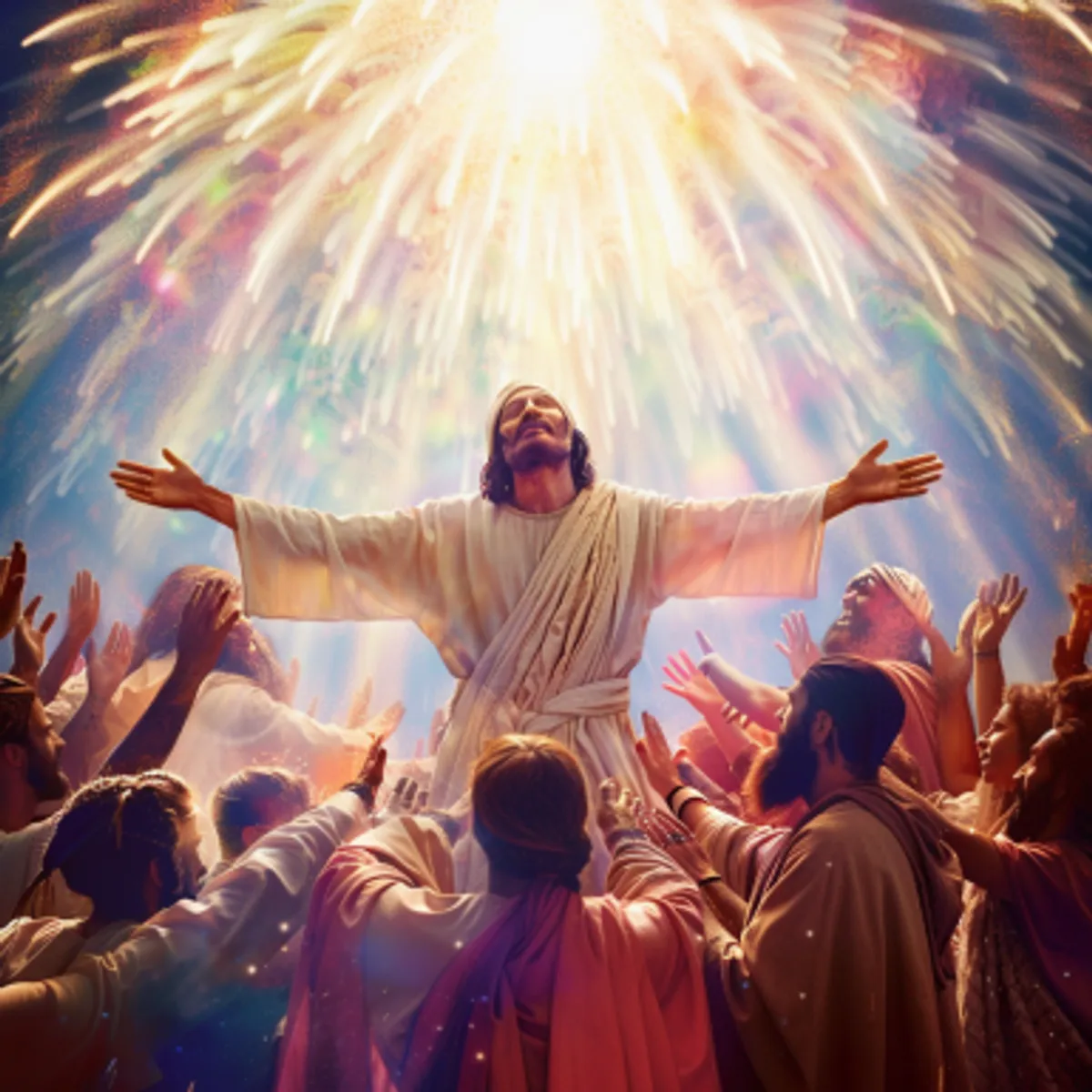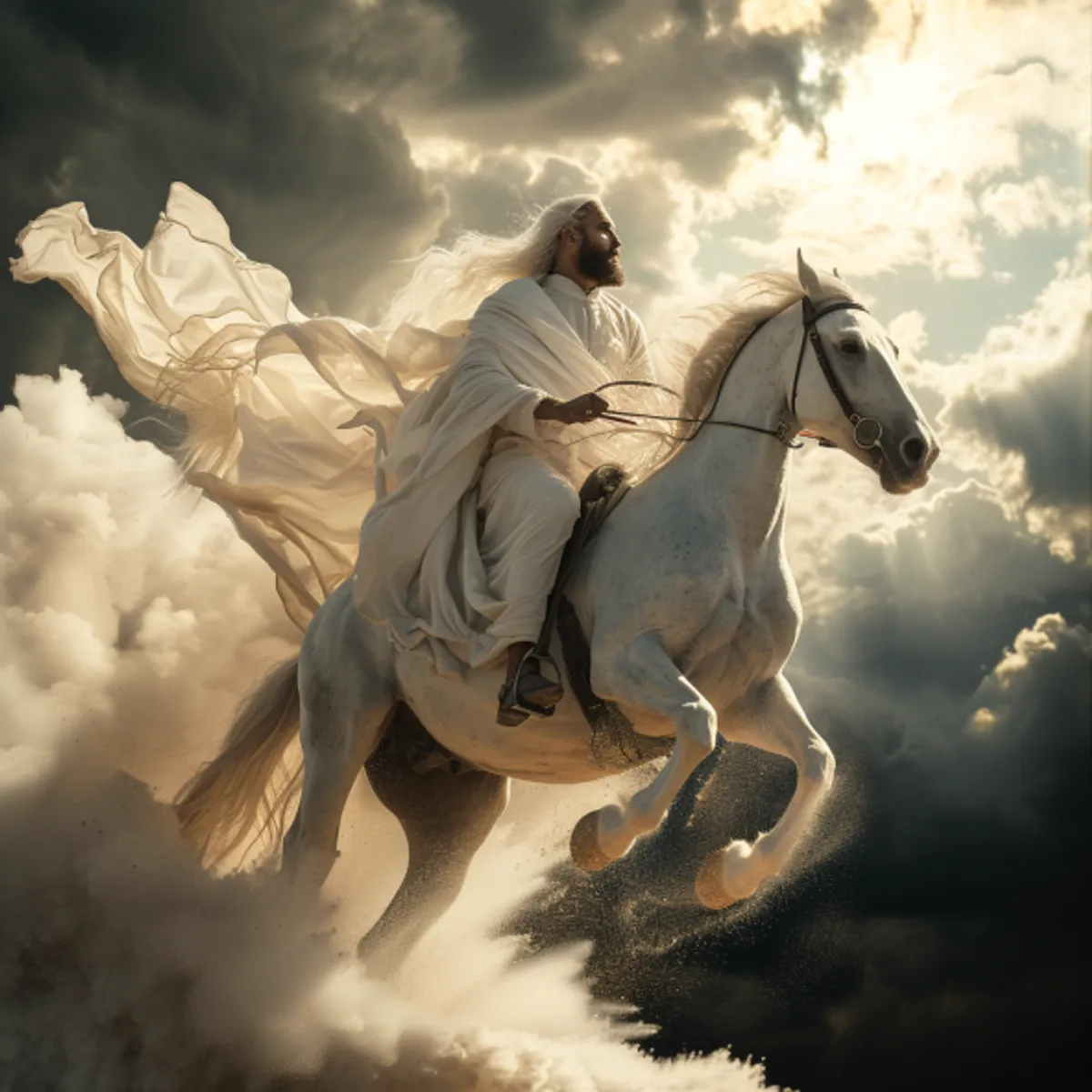The Books of the Bible
Discover the books of the Bible, their stories, and their wisdom.
Genesis
Creation
The Book of Genesis is the first book of the Hebrew Bible and the Christian Old Testament. It tells the story of the creation of the world and the first humans, Adam and Eve. Adam and Eve were created by God and placed in the Garden of Eden, where they were given instructions not to eat from the tree of the knowledge of good and evil. However, they were tempted by a serpent and chose to eat the fruit, leading to their expulsion from the garden.The book also tells the story of the first family and their descendants, including the story of Cain and Abel, who were the first children born to Adam and Eve. Cain killed Abel out of jealousy, and as a result, he was punished and exiled by God. The book also includes the story of the Great Flood, in which God flooded the earth to cleanse it of wickedness, and the Tower of Babel, in which the people of the earth attempted to build a tower to reach the heavens.The book also includes the stories of Abraham and his family, including his son Isaac and his grandson Jacob, who was later called Israel. The book of Genesis ends with the story of Joseph, who was sold into slavery by his brothers but later became a powerful official in Egypt.
Exodus
Deliverance
The Book of Exodus is the second book of the Hebrew Bible and the Christian Old Testament. It tells the story of the Israelites, who were descended from Abraham, Isaac, and Jacob, and their slavery in Egypt. The book begins with the story of Moses, who was chosen by God to lead the Israelites out of slavery. With the help of Aaron, his brother, and various miracles, Moses confronts Pharaoh, the ruler of Egypt, and demands that he release the Israelites. Pharaoh refuses, and God sends ten plagues upon the Egyptians to persuade Pharaoh to let the Israelites go. Eventually, Pharaoh agrees, and the Israelites leave Egypt in a mass exodus known as the Exodus.The book also includes the story of the Ten Commandments, which were given to the Israelites by God at Mount Sinai. These commandments include instructions on how to worship God, how to treat others, and how to live a righteous life.
Leviticus
Laws
The Book of Leviticus is the third book of the Hebrew Bible and the Christian Old Testament. It contains the laws and instructions given by God to the Israelites through Moses after the Exodus from Egypt. The book is divided into several sections, including laws on sacrifices and offerings, laws on cleanliness and purity, laws on moral and ethical behavior, and laws on the proper conduct of religious ceremonies. One of the main themes of the book is the concept of holiness, and it emphasizes the importance of being set apart and dedicated to God. The book also contains a number of regulations concerning the proper treatment of others, including laws on justice, charity, and social responsibility. Key figures in the book of Leviticus include Moses, who received the laws from God, and Aaron, the first high priest of the Israelites. The book also mentions various other Israelite leaders and officials, such as the priests and the Levites, who were responsible for carrying out the various laws and instructions.
Numbers
Census
The Book of Numbers is the fourth book of the Hebrew Bible and the Christian Old Testament. It tells the story of the Israelites as they journey from Mount Sinai to the Promised Land, following their exodus from Egypt. The book begins with a census of the Israelites, and it includes a number of stories and events that occurred during their journey.One of the main themes of the book is the Israelites' faithfulness to God and their obedience to his commands. The book also includes a number of stories of rebellion and disobedience, as well as stories of God's punishment and mercy.Key figures in the book of Numbers include Moses, who led the Israelites on their journey, and Aaron, the first high priest of the Israelites. The book also mentions various other Israelite leaders and officials, such as the priests and the Levites, who were responsible for carrying out the various laws and instructions given by God. The book also includes stories of various individuals, such as Miriam, Aaron's sister, and Balaam, a prophet hired by the Moabites to curse the Israelites.
Deuteronomy
Repeated Laws
The Book of Deuteronomy is the fifth and final book of the Torah, the first five books of the Hebrew Bible and the Christian Old Testament. It is a summary of the laws and instructions given to the Israelites by God through Moses, and it serves as a reminder to the Israelites of their obligations and responsibilities as God's chosen people.The book begins with a review of the Israelites' journey from Egypt to the border of the Promised Land, and it includes a number of stories and events that occurred during this journey. It also includes a number of laws and instructions on how the Israelites should conduct themselves, including laws on worship, justice, charity, and social responsibility.Key figures in the book of Deuteronomy include Moses, who delivered the laws and instructions to the Israelites, and God, who gave the laws and instructions to Moses. The book also mentions various other Israelite leaders and officials, such as the priests and the Levites, who were responsible for carrying out the various laws and instructions.
Joshua
Conquest
The Book of Joshua is the sixth book of the Hebrew Bible and the Christian Old Testament. It tells the story of the Israelites under the leadership of Joshua, who was chosen by God to succeed Moses as the leader of the Israelites. The book begins with the death of Moses and the transition of leadership to Joshua, and it includes a number of stories and events that occurred during Joshua's leadership. One of the main themes of the book is the conquest of the Promised Land, which the Israelites had been promised by God. With the help of God, Joshua and the Israelites defeat a number of their enemies and take control of the land. The book also includes a number of stories about the division of the land among the tribes of Israel and the allocation of cities to the Levites. Key figures in the book of Joshua include Joshua, who was chosen by God to lead the Israelites, and God, who gave the Israelites victory over their enemies. The book also mentions various other Israelite leaders and officials, such as the priests and the Levites, who were responsible for carrying out the various laws and instructions given by God. The book also includes stories of various individuals, such as Rahab, a prostitute who helped the Israelites, and Achan, who was punished for disobeying God's commands.
Judges
Leaders
The Book of Judges is a book in the Hebrew Bible and the Old Testament of the Christian Bible. It is the seventh book of the Bible in the Hebrew Bible and the second book of the Bible in the Christian Old Testament. The Book of Judges covers the period of history in ancient Israel following the death of Joshua, the leader of the Israelites after the Exodus, and the conquest of the Promised Land. The book tells the stories of the judges, who were leaders and military leaders appointed by God to deliver the Israelites from their enemies and lead them in the ways of God. Key figures in the Book of Judges include the judges themselves, such as Othniel, Ehud, Deborah, Gideon, and Samson, as well as various other individuals and groups who are involved in the stories contained in the book. The book also includes a number of references to God and his actions, as well as expressions of trust and reliance on him.
Ruth
Loyalty
The Book of Ruth is a book of the Hebrew Bible and the Christian Old Testament. It tells the story of Ruth, a Moabite woman who married into the family of Elimelech, an Israelite. After Elimelech and his two sons die, Ruth chooses to leave her homeland and return to the land of Israel with her mother-in-law, Naomi. In Israel, Ruth meets and marries Boaz, a wealthy relative of her deceased husband. Ruth and Boaz have a son, Obed, who becomes the grandfather of King David. The book ends with a genealogy that traces the descendants of Ruth and Boaz, showing how they are part of the family line that leads to Jesus. Key figures in the book of Ruth include Ruth, Naomi, Boaz, and Obed. The book also mentions various other individuals, such as Elimelech, Ruth's deceased husband, and the elders of the town of Bethlehem.
1 Samuel
Rise of Kings
The Book of 1 Samuel is the first book of the Books of Samuel in the Hebrew Bible and the Christian Old Testament. It tells the story of the transition of leadership in Israel from the judges, who were temporary leaders appointed by God, to a monarchy, with a king ruling over the people. The book begins with the story of Hannah, who prayed to God for a son and was blessed with the birth of Samuel. Samuel grows up to be a prophet and judge, and he anoints Saul as the first king of Israel. However, Saul disobeys God and is replaced by David, a young shepherd who becomes a great warrior and defeats the Philistine giant Goliath. Key figures in the book of 1 Samuel include Samuel, Hannah, Saul, and David. The book also mentions various other individuals, such as Eli, the high priest, and the prophets Nathan and Gad. The book also includes stories of various battles and conflicts, such as the Philistine wars and the struggle between Saul and David for the throne of Israel.
2 Samuel
David's Reign
The Book of 2 Samuel is the second book of the Books of Samuel in the Hebrew Bible and the Christian Old Testament. It tells the story of the reign of King David, who was chosen by God to be the king of Israel. The book begins with the story of David's rise to power and his defeat of the Philistines, who had long been a threat to the Israelites. It also includes the story of David's affair with Bathsheba, the wife of one of his soldiers, and the consequences of this sin. Despite these challenges, David remains a successful and popular king, and he establishes Jerusalem as the capital of Israel. Key figures in the book of 2 Samuel include David, Bathsheba, and Solomon, David's son and successor as king. The book also mentions various other individuals, such as Nathan, the prophet, and Joab, David's general. The book also includes stories of various battles and conflicts, such as the struggle between David and his son Absalom for the throne of Israel.
1 Kings
Divided Kingdom
The Book of 1 Kings is the third book of the Books of the Kings in the Hebrew Bible and the Christian Old Testament. It tells the story of the reigns of the kings of Israel and Judah, beginning with the reign of Solomon, the son of David. The book begins with the story of Solomon's wealth and wisdom, and it includes the story of the construction of the Temple in Jerusalem. However, Solomon's later years are marked by corruption and disobedience to God, and the kingdom begins to decline. After Solomon's death, the kingdom is divided into two separate kingdoms: Israel in the north and Judah in the south. The book also includes the stories of the kings of Israel and Judah, including the good kings who followed God's commands and the bad kings who turned away from God. Key figures in the book of 1 Kings include Solomon, Rehoboam, Ahab, Elijah, and Elisha. The book also mentions various other individuals, such as the prophets and the priests, who served as advisers and leaders for the kings.
2 Kings
Fall of Israel
The Book of 2 Kings is the fourth book of the Books of the Kings in the Hebrew Bible and the Christian Old Testament. It continues the story of the kings of Israel and Judah, beginning with the reign of Ahaziah, the king of Israel, and ending with the fall of the Kingdom of Judah to the Babylonians. The book includes the stories of the kings of Israel and Judah, including both the good kings who followed God's commands and the bad kings who turned away from God. It also includes the stories of the prophets Elijah and Elisha, who were sent by God to warn the people of Israel and Judah of their disobedience and to call them back to God. The book ends with the fall of the Kingdom of Judah to the Babylonians, and the exile of the Israelites to Babylon. Key figures in the book of 2 Kings include Ahaziah, Jehoram, Jehu, Jehoahaz, Jehoiachin, and Zedekiah. The book also mentions various other individuals, such as the prophets and the priests, who served as advisers and leaders for the kings
1 Chronicles
Genealogies
The Book of 1 Chronicles is the first book of the Books of Chronicles in the Hebrew Bible and the Christian Old Testament. It is a genealogy and history of the Israelites, beginning with Adam and tracing the family line through the reigns of the kings of Israel and Judah. The book includes lists of the ancestors of various Israelite clans and tribes, as well as descriptions of the military and political events of the time. It also includes stories of key figures such as Saul, David, and Solomon, and it emphasizes the importance of God's role in the history of the Israelites. Key figures in the book of 1 Chronicles include Adam, Abraham, Isaac, Jacob, and the kings of Israel and Judah, including Saul, David, and Solomon. The book also mentions various other individuals, such as the prophets and the priests, who served as advisers and leaders for the kings. The book also includes lists of the descendants of various Israelite clans and tribes, including the Leviites, the priests, and the warriors.
2 Chronicles
Temple History
The Book of 2 Chronicles is the second book of the Books of Chronicles in the Hebrew Bible and the Christian Old Testament. It is a continuation of the history of the Israelites, beginning with the reign of Solomon and continuing through the fall of the Kingdom of Judah to the Babylonians. The book includes stories of the kings of Judah, including both the good kings who followed God's commands and the bad kings who turned away from God. It also includes stories of the prophets and other leaders who served as advisers and counselors to the kings. The book ends with the fall of the Kingdom of Judah to the Babylonians and the exile of the Israelites to Babylon. Key figures in the book of 2 Chronicles include Solomon, Rehoboam, Asa, Jehoshaphat, Hezekiah, and Zedekiah. The book also mentions various other individuals, such as the prophets and the priests, who served as advisers and leaders for the kings. The book also emphasizes the role of God in the history of the Israelites and the importance of obedience to his commands.
Ezra
Return from Exile
The Book of Ezra is a book of the Hebrew Bible and the Christian Old Testament. It tells the story of the return of the exiled Israelites to the land of Israel after the fall of the Kingdom of Judah to the Babylonians. The book begins with the decree of the Persian King Cyrus, who allows the Israelites to return to their homeland and rebuild the Temple in Jerusalem. It includes the story of Ezra, a priest and scribe who is appointed by the Persian authorities to lead the Israelites in the rebuilding of the Temple and the restoration of the law and worship of God. The book also includes a list of the families and individuals who returned to the land of Israel, as well as a record of the rebuilding of the Temple and the establishment of the Jewish community in Jerusalem. Key figures in the book of Ezra include Ezra, Cyrus, and the Persian officials who supported the rebuilding of the Temple. The book also mentions various other individuals, such as the priests and the Levites, who played a role in the rebuilding and restoration of the Temple and the community
Nehemiah
Rebuilding the Walls
The Book of Nehemiah is a book of the Hebrew Bible and the Christian Old Testament. It tells the story of Nehemiah, a Jewish official in the Persian court, who is appointed by the Persian King Artaxerxes to lead the rebuilding of the walls of Jerusalem and the restoration of the Jewish community in the land of Israel. The book begins with the story of Nehemiah's prayer and request to the king to allow him to return to Jerusalem and rebuild the walls. It includes the story of the rebuilding of the walls, as well as the reforms and reforms implemented by Nehemiah to restore the community to obedience to God's law. Key figures in the book of Nehemiah include Nehemiah, Artaxerxes, and the Persian officials who supported the rebuilding of the walls of Jerusalem. The book also mentions various other individuals, such as the priests and the Levites, who played a role in the rebuilding and restoration of the community. The book also includes stories of opposition and conflict with the neighboring peoples, such as the Samaritans, who opposed the rebuilding of the walls.
Esther
Royal Intervention
The Book of Esther is a book of the Hebrew Bible and the Christian Old Testament. It tells the story of Esther, a Jewish woman who becomes the queen of the Persian King Xerxes and uses her position to save her people from a plot to destroy them. The book begins with the story of Esther's rise to power, and it includes the story of the plot by the Persian official Haman to have all the Jews in the kingdom killed. Esther, with the help of her uncle Mordecai, persuades the king to spare the Jews and to punish Haman instead. Key figures in the book of Esther include Esther, Xerxes, Haman, and Mordecai. The book also mentions various other individuals, such as the court officials and the Jews who were threatened by Haman's plot. The book also includes a celebration, known as the Feast of Purim, which is still celebrated by Jews today in memory of the deliverance of the Jews from Haman's plot.
Job
Suffering
The Book of Job is a book of the Hebrew Bible and the Christian Old Testament. It tells the story of Job, a wealthy and righteous man who suffers a series of tragedies and afflictions, and the conversations between Job and his friends, who try to explain his suffering. The book begins with a prologue in which God allows Satan to test Job's faith by taking away his wealth, his children, and his health. Despite his suffering, Job remains steadfast in his faith and refuses to curse God. The book then includes a series of dialogues between Job and his friends, who try to explain his suffering and persuade him to confess his sins. Key figures in the book of Job include Job, Satan, and Job's friends, including Eliphaz, Bildad, and Zophar. The book also includes a number of speeches by God, in which he defends his actions and challenges Job's understanding of his suffering. The book ends with the restoration of Job's fortunes and the reconciliation between Job and his friends.
Psalms
A Collection of Hymns and Prayers
The Book of Psalms is a book of the Hebrew Bible and the Christian Old Testament. It is a collection of 150 poems and songs that express a wide range of emotions and experiences, including praise, thanksgiving, trust, and lament. The Book of Psalms is attributed to King David and other Israelite kings, priests, and prophets, and it has long been a source of inspiration and comfort for people of many different cultures and religions. The Psalms are divided into five sections, each with a different theme or focus. Key figures in the book of Psalms include David, as well as other Israelite kings, priests, and prophets who are credited with writing some of the Psalms. The book also mentions various other individuals, such as enemies and oppressors, who are the objects of the Psalmists' prayers and complaints. The book also includes a number of references to God and his actions, as well as expressions of trust and reliance on him.
Proverbs
Wisdom
The Book of Proverbs is a book of the Hebrew Bible and the Christian Old Testament. It is a collection of wise sayings and teachings that offer guidance on how to live a good and meaningful life. The Book of Proverbs is attributed to King Solomon and other wise men of ancient Israel, and it covers a wide range of subjects, including wisdom, understanding, justice, righteousness, and self-control. The Proverbs are grouped into chapters according to theme, and they often take the form of short, pithy sayings that can be easily remembered and applied to daily life. Key figures in the book of Proverbs include Solomon and other wise men of ancient Israel who are credited with writing or collecting the Proverbs. The book also mentions various other individuals, such as fools, wicked men, and the righteous, who are held up as examples of different ways of living. The book also includes a number of references to God and his actions, as well as expressions of trust and reliance on him.
Ecclesiastes
Meaning of Life
The Book of Ecclesiastes is a book of the Hebrew Bible and the Christian Old Testament. It is a philosophical and reflective work that explores the meaning and purpose of life. The Book of Ecclesiastes is attributed to King Solomon, and it is written in the form of a series of reflections on the vanity and futility of human endeavors. The book describes the many things that people pursue in life, such as wealth, pleasure, and power, and it concludes that these things are fleeting and ultimately unsatisfying. The book concludes with a call to fear God and keep his commandments, as this is the only way to find true happiness and meaning in life. Key figures in the book of Ecclesiastes include Solomon, who is the author and narrator of the book. The book also includes references to various other individuals, such as the wise man, the fool, and the righteous, who are held up as examples of different ways of living.
Song of Solomon
Love Poetry
The Song of Solomon, also known as the Song of Songs, is a book of the Hebrew Bible and the Christian Old Testament. It is a collection of love poetry that celebrates the beauty and passion of romantic love. The Song of Solomon is attributed to King Solomon, and it is written in the form of a series of poems spoken by two lovers, a man and a woman, who express their deep love and desire for one another. The poems are full of vivid and sensuous imagery, and they celebrate the physical and emotional aspects of love. Key figures in the Song of Solomon include the man and the woman, who are the speakers and subjects of the poems. The book also includes references to various other individuals, such as the lover's friends and family, who are mentioned in the poems. The book does not mention God or make any explicit reference to religious themes, but it has been interpreted by some as a metaphor for the love between God and his people.
Isaiah
Prophecy
The Book of Isaiah is a book of the Hebrew Bible and the Christian Old Testament. It is a collection of prophecies and teachings attributed to the prophet Isaiah, who lived in the 8th century BCE and served as a prophet and adviser to the kings of Judah. The Book of Isaiah covers a wide range of subjects, including the judgment and redemption of God's people, the coming of the Messiah, and the restoration of the Kingdom of God. The book includes a number of prophecies about the Babylonian exile and the return of the Jews to their homeland, as well as visions of the future restoration and prosperity of the kingdom of God. Key figures in the book of Isaiah include Isaiah, as well as the kings of Judah, including Ahaz, Hezekiah, and Manasseh. The book also mentions various other individuals, such as the Babylonians, the Persians, and the Messiah, who are the subjects of the prophet's teachings and prophecies. The book also includes a number of references to God and his actions, as well as expressions of trust and reliance on him.
Jeremiah
Warning
The Book of Jeremiah is a book of the Hebrew Bible and the Christian Old Testament. It is a collection of prophecies and teachings attributed to the prophet Jeremiah, who lived in the 6th and 5th centuries BCE and served as a prophet and adviser to the kings of Judah. The Book of Jeremiah covers a wide range of subjects, including the judgment and redemption of God's people, the coming of the Messiah, and the restoration of the Kingdom of God. The book includes a number of prophecies about the Babylonian exile and the fall of the Kingdom of Judah, as well as visions of the future restoration and prosperity of the kingdom of God. Key figures in the book of Jeremiah include Jeremiah, as well as the kings of Judah, including Josiah, Jehoiakim, and Zedekiah. The book also mentions various other individuals, such as the Babylonians, the Persians, and the Messiah, who are the subjects of the prophet's teachings and prophecies. The book also includes a number of references to God and his actions, as well as expressions of trust and reliance on him.
Lamentations
Grief
The Book of Lamentations is a book of the Hebrew Bible and the Christian Old Testament. It is a collection of five poems that express grief and despair over the destruction of Jerusalem and the exile of the Jews to Babylon. The Book of Lamentations is attributed to the prophet Jeremiah, who is traditionally believed to have written the poems as a response to the fall of the Kingdom of Judah to the Babylonians. The poems are written in the form of laments, or expressions of grief and sorrow, and they describe the suffering and devastation of the people of Jerusalem and the exile of the Jews to Babylon. Key figures in the book of Lamentations include Jeremiah, who is traditionally believed to be the author of the poems, as well as the people of Jerusalem and the Jews who were exiled to Babylon. The book does not mention any other specific individuals, but it does include a number of references to God and his actions, as well as expressions of trust and reliance on him.
Ezekiel
Vision
The Book of Ezekiel is a book of the Hebrew Bible and the Christian Old Testament. It is a collection of prophecies and teachings attributed to the prophet Ezekiel, who lived in the 6th century BCE and served as a prophet to the Jews during the Babylonian exile. The Book of Ezekiel covers a wide range of subjects, including the judgment and redemption of God's people, the coming of the Messiah, and the restoration of the Kingdom of God. The book includes a number of prophecies about the Babylonian exile and the fall of the Kingdom of Judah, as well as visions of the future restoration and prosperity of the kingdom of God. Key figures in the book of Ezekiel include Ezekiel, as well as the kings of Judah, including Jehoiachin and Zedekiah. The book also mentions various other individuals, such as the Babylonians, the Persians, and the Messiah, who are the subjects of the prophet's teachings and prophecies. The book also includes a number of references to God and his actions, as well as expressions of trust and reliance on him.
Daniel
Interpretation of Dreams
The Book of Daniel is a book of the Hebrew Bible and the Christian Old Testament. It is a collection of stories and prophecies attributed to the prophet Daniel, who lived in the 6th century BCE and served as a court official and adviser to the kings of Babylon and Persia. The Book of Daniel covers a wide range of subjects, including the judgment and redemption of God's people, the coming of the Messiah, and the restoration of the Kingdom of God. The book includes a number of stories about Daniel and his experiences as a captive in Babylon, as well as visions and prophecies about the future of God's people and the kingdom of God. Key figures in the book of Daniel include Daniel, as well as the kings of Babylon and Persia, including Nebuchadnezzar, Belshazzar, Darius, and Cyrus. The book also mentions various other individuals, such as the Babylonian officials, the Persians, and the Messiah, who are the subjects of the prophet's teachings and prophecies. The book also includes a number of references to God and his actions, as well as expressions of trust and reliance on him.
Hosea
Repentance
The Book of Hosea is a book of the Hebrew Bible and the Christian Old Testament. It is a collection of prophecies and teachings attributed to the prophet Hosea, who lived in the 8th century BCE and served as a prophet to the Northern Kingdom of Israel. The Book of Hosea covers a wide range of subjects, including the judgment and redemption of God's people, the coming of the Messiah, and the restoration of the Kingdom of God. The book includes a number of prophecies about the fall of the Northern Kingdom of Israel to the Assyrians, as well as visions of the future restoration and prosperity of the kingdom of God. Key figures in the book of Hosea include Hosea, as well as the kings of Israel, including Jeroboam II and Zechariah. The book also mentions various other individuals, such as the Assyrians, the Persians, and the Messiah, who are the subjects of the prophet's teachings and prophecies. The book also includes a number of references to God and his actions, as well as expressions of trust and reliance on him.
Joel
Coming of the Lord
The Book of Joel is a book of the Hebrew Bible and the Christian Old Testament. It is a collection of prophecies and teachings attributed to the prophet Joel, who lived in the 8th or 9th century BCE and served as a prophet to the people of Judah. The Book of Joel covers a wide range of subjects, including the judgment and redemption of God's people, the coming of the Messiah, and the restoration of the Kingdom of God. The book includes a number of prophecies about the coming of a great day of judgment, as well as visions of the future restoration and prosperity of the kingdom of God. Key figures in the book of Joel include Joel, as well as the people of Judah, who are the recipients of the prophet's teachings and prophecies. The book also mentions various other individuals, such as the Babylonians, the Persians, and the Messiah, who are the subjects of the prophet's teachings and prophecies. The book also includes a number of references to God and his actions, as well as expressions of trust and reliance on him.
Amos
Justice
The Book of Amos is a book of the Hebrew Bible and the Christian Old Testament. It is a collection of prophecies and teachings attributed to the prophet Amos, who lived in the 8th century BCE and served as a prophet to the Northern Kingdom of Israel. The Book of Amos covers a wide range of subjects, including the judgment and redemption of God's people, the coming of the Messiah, and the restoration of the Kingdom of God. The book includes a number of prophecies about the fall of the Northern Kingdom of Israel to the Assyrians, as well as visions of the future restoration and prosperity of the kingdom of God. Key figures in the book of Amos include Amos, as well as the kings of Israel, including Jeroboam II and Zechariah. The book also mentions various other individuals, such as the Assyrians, the Persians, and the Messiah, who are the subjects of the prophet's teachings and prophecies. The book also includes a number of references to God and his actions, as well as expressions of trust and reliance on him.
Obadiah
Judah's Enemies
The Book of Obadiah is a book of the Hebrew Bible and the Christian Old Testament. It is a collection of prophecies and teachings attributed to the prophet Obadiah, who lived in the 6th century BCE and served as a prophet to the people of Judah. The Book of Obadiah covers a wide range of subjects, including the judgment and redemption of God's people, the coming of the Messiah, and the restoration of the Kingdom of God. The book includes a number of prophecies about the fall of the Edomites, a neighboring nation of Judah, as well as visions of the future restoration and prosperity of the kingdom of God. Key figures in the book of Obadiah include Obadiah, as well as the Edomites, who are the recipients of the prophet's teachings and prophecies. The book also mentions various other individuals, such as the Babylonians, the Persians, and the Messiah, who are the subjects of the prophet's teachings and prophecies. The book also includes a number of references to God and his actions, as well as expressions of trust and reliance on him.
Jonah
Reluctant Prophet
The Book of Jonah is a book of the Hebrew Bible and the Christian Old Testament. It is a story about the prophet Jonah and his experiences as a prophet to the people of Nineveh. The Book of Jonah tells the story of how Jonah was called by God to go to Nineveh, a city in the Assyrian Empire, and warn the people there of the coming judgment of God. Jonah, however, did not want to go to Nineveh, and he tried to run away from God's call. God eventually caught up with Jonah, and Jonah reluctantly went to Nineveh and delivered God's message. To Jonah's surprise, the people of Nineveh repented of their sins and were spared from God's judgment. Key figures in the book of Jonah include Jonah and the people of Nineveh. The book also mentions God and his actions, as well as expressions of trust and reliance on him. The book does not mention any other specific individuals.
Micah
Social Justice
The Book of Micah is a book of the Hebrew Bible and the Christian Old Testament. It is a collection of prophecies and teachings attributed to the prophet Micah, who lived in the 8th century BCE and served as a prophet to the people of Judah. The Book of Micah covers a wide range of subjects, including the judgment and redemption of God's people, the coming of the Messiah, and the restoration of the Kingdom of God. The book includes a number of prophecies about the fall of the Northern Kingdom of Israel to the Assyrians, as well as visions of the future restoration and prosperity of the kingdom of God. Key figures in the book of Micah include Micah, as well as the kings of Judah, including Hezekiah and Manasseh. The book also mentions various other individuals, such as the Assyrians, the Persians, and the Messiah, who are the subjects of the prophet's teachings and prophecies. The book also includes a number of references to God and his actions, as well as expressions of trust and reliance on him.
Nahum
Nineveh's Fall
The Book of Nahum is a book of the Hebrew Bible and the Christian Old Testament. It is a collection of prophecies and teachings attributed to the prophet Nahum, who lived in the 7th century BCE and served as a prophet to the people of Judah. The Book of Nahum covers a wide range of subjects, including the judgment and redemption of God's people, the coming of the Messiah, and the restoration of the Kingdom of God. The book includes a number of prophecies about the fall of the Assyrian Empire, as well as visions of the future restoration and prosperity of the kingdom of God. Key figures in the book of Nahum include Nahum, as well as the Assyrian Empire, which is the recipient of the prophet's teachings and prophecies. The book also mentions various other individuals, such as the Babylonians, the Persians, and the Messiah, who are the subjects of the prophet's teachings and prophecies. The book also includes a number of references to God and his actions, as well as expressions of trust and reliance on him.
Habakkuk
Faith in God
The Book of Habakkuk is a book of the Hebrew Bible and the Christian Old Testament. It is a collection of prophecies and teachings attributed to the prophet Habakkuk, who lived in the 7th century BCE and served as a prophet to the people of Judah. The Book of Habakkuk covers a wide range of subjects, including the judgment and redemption of God's people, the coming of the Messiah, and the restoration of the Kingdom of God. The book includes a number of prophecies about the coming of a great day of judgment, as well as visions of the future restoration and prosperity of the kingdom of God. Key figures in the book of Habakkuk include Habakkuk, as well as the people of Judah, who are the recipients of the prophet's teachings and prophecies. The book also mentions various other individuals, such as the Babylonians, the Persians, and the Messiah, who are the subjects of the prophet's teachings and prophecies. The book also includes a number of references to God and his actions, as well as expressions of trust and reliance on him.
Zephaniah
Judgment
The Book of Zephaniah is a book of the Hebrew Bible and the Christian Old Testament. It is a collection of prophecies and teachings attributed to the prophet Zephaniah, who lived in the 7th century BCE and served as a prophet to the people of Judah. The Book of Zephaniah covers a wide range of subjects, including the judgment and redemption of God's people, the coming of the Messiah, and the restoration of the Kingdom of God. The book includes a number of prophecies about the coming of a great day of judgment, as well as visions of the future restoration and prosperity of the kingdom of God. Key figures in the book of Zephaniah include Zephaniah, as well as the people of Judah, who are the recipients of the prophet's teachings and prophecies. The book also mentions various other individuals, such as the Babylonians, the Persians, and the Messiah, who are the subjects of the prophet's teachings and prophecies. The book also includes a number of references to God and his actions, as well as expressions of trust and reliance on him.
Haggai
Rebuilding the Temple
The Book of Haggai is a book of the Hebrew Bible and the Christian Old Testament. It is a collection of prophecies and teachings attributed to the prophet Haggai, who lived in the 6th century BCE and served as a prophet to the people of Judah. The Book of Haggai covers a wide range of subjects, including the rebuilding of the Temple in Jerusalem, the judgment and redemption of God's people, and the coming of the Messiah. The book includes a number of prophecies and teachings about the importance of rebuilding the Temple and the consequences of neglecting this task, as well as visions of the future restoration and prosperity of the kingdom of God. Key figures in the book of Haggai include Haggai, as well as the people of Judah, who are the recipients of the prophet's teachings and prophecies. The book also mentions various other individuals, such as the Babylonians, the Persians, and the Messiah, who are the subjects of the prophet's teachings and prophecies. The book also includes a number of references to God and his actions, as well as expressions of trust and reliance on him.
Zechariah
Vision
The Book of Zechariah is a book of the Hebrew Bible and the Christian Old Testament. It is a collection of prophecies and teachings attributed to the prophet Zechariah, who lived in the 6th century BCE and served as a prophet to the people of Judah. The Book of Zechariah covers a wide range of subjects, including the rebuilding of the Temple in Jerusalem, the judgment and redemption of God's people, and the coming of the Messiah. The book includes a number of prophecies and teachings about the importance of rebuilding the Temple and the consequences of neglecting this task, as well as visions of the future restoration and prosperity of the kingdom of God. Key figures in the book of Zechariah include Zechariah, as well as the people of Judah, who are the recipients of the prophet's teachings and prophecies. The book also mentions various other individuals, such as the Babylonians, the Persians, and the Messiah, who are the subjects of the prophet's teachings and prophecies. The book also includes a number of references to God and his actions, as well as expressions of trust and reliance on him.
Malachi
Last Words
The Book of Malachi is a book of the Hebrew Bible and the Christian Old Testament. It is a collection of prophecies and teachings attributed to the prophet Malachi, who lived in the 5th century BCE and served as a prophet to the people of Judah. The Book of Malachi covers a wide range of subjects, including the judgment and redemption of God's people, the coming of the Messiah, and the restoration of the Kingdom of God. The book includes a number of prophecies and teachings about the importance of faithfulness and obedience to God, as well as visions of the future restoration and prosperity of the kingdom of God. Key figures in the book of Malachi include Malachi, as well as the people of Judah, who are the recipients of the prophet's teachings and prophecies. The book also mentions various other individuals, such as the Babylonians, the Persians, and the Messiah, who are the subjects of the prophet's teachings and prophecies. The book also includes a number of references to God and his actions, as well as expressions of trust and reliance on him.
Matthew
Jesus' life and teachings
The Gospel of Matthew is one of the four gospels in the New Testament of the Bible. It is a written account of the life, teachings, and ministry of Jesus Christ. The Gospel of Matthew is traditionally attributed to the apostle Matthew, who was a tax collector and one of Jesus' disciples.The Gospel of Matthew begins with the genealogy of Jesus, tracing his lineage back to Abraham, and then tells the story of Jesus' birth and his childhood. It then goes on to describe Jesus' ministry and teachings, including his miracles, parables, and sermons. The Gospel also includes accounts of Jesus' death and resurrection, as well as his appearances to his disciples after his resurrection.Key figures in the Gospel of Matthew include Jesus, as well as his disciples, including Matthew, Peter, James, and John. The Gospel also mentions various other individuals, such as John the Baptist, the Pharisees, and the Roman authorities, who play significant roles in the story. The Gospel also includes a number of references to God and his actions, as well as expressions of trust and reliance on him.
Mark
Jesus' Ministry
The Gospel of Mark is one of the four gospels in the New Testament of the Bible. It is a written account of the life, teachings, and ministry of Jesus Christ. The Gospel of Mark is traditionally attributed to the apostle Mark, who was a close associate of the apostle Peter.The Gospel of Mark begins with the story of John the Baptist, who was a precursor to Jesus, and then goes on to describe Jesus' ministry and teachings, including his miracles, parables, and sermons. The Gospel also includes accounts of Jesus' death and resurrection, as well as his appearances to his disciples after his resurrection.Key figures in the Gospel of Mark include Jesus, as well as his disciples, including Peter, James, and John. The Gospel also mentions various other individuals, such as John the Baptist, the Pharisees, and the Roman authorities, who play significant roles in the story. The Gospel also includes a number of references to God and his actions, as well as expressions of trust and reliance on him.
Luke
Jesus' Birth and Mission
The Gospel of Luke is one of the four gospels in the New Testament of the Bible. It is a written account of the life, teachings, and ministry of Jesus Christ. The Gospel of Luke is traditionally attributed to the physician Luke, who was a close associate of the apostle Paul.The Gospel of Luke begins with the story of the birth of John the Baptist, and then goes on to describe the birth, childhood, and ministry of Jesus. It includes accounts of Jesus' miracles, parables, and sermons, as well as his interactions with various people, including his disciples, the Pharisees, and the Roman authorities. The Gospel also includes accounts of Jesus' death and resurrection, as well as his appearances to his disciples after his resurrection.Key figures in the Gospel of Luke include Jesus, as well as his disciples, including Peter, James, and John. The Gospel also mentions various other individuals, such as John the Baptist, the Pharisees, and the Roman authorities, who play significant roles in the story. The Gospel also includes a number of references to God and his actions, as well as expressions of trust and reliance on him.
John
Jesus' Divine Nature
The Gospel of John is one of the four gospels in the New Testament of the Bible. It is a written account of the life, teachings, and ministry of Jesus Christ. The Gospel of John is traditionally attributed to the apostle John, who was one of Jesus' closest disciples. The Gospel of John begins with a prologue that describes Jesus as the Word of God and the light of the world. It then goes on to describe Jesus' ministry and teachings, including his miracles, parables, and sermons. The Gospel also includes accounts of Jesus' death and resurrection, as well as his appearances to his disciples after his resurrection. Key figures in the Gospel of John include Jesus, as well as his disciples, including John, Peter, James, and Thomas. The Gospel also mentions various other individuals, such as the Pharisees, the Roman authorities, and Mary Magdalene, who play significant roles in the story. The Gospel also includes a number of references to God and his actions, as well as expressions of trust and reliance on him.
The Acts of the Apostles
The Early Church
The Book of Acts, also known as the Acts of the Apostles, is a book of the New Testament of the Bible. It is a written account of the early Christian church and the spread of the gospel in the years following the resurrection of Jesus. The Book of Acts is traditionally attributed to the apostle Luke, who was a close associate of the apostle Paul.The Book of Acts begins with the ascension of Jesus and the descent of the Holy Spirit at Pentecost. It then goes on to describe the spread of the gospel through the ministry of Jesus' disciples, including the apostle Peter, the apostle Paul, and other early Christian leaders. The Book of Acts also includes accounts of the establishment of the early Christian church, including the selection of Matthias to replace Judas Iscariot as one of the Twelve Apostles, and the spread of the gospel to various parts of the Roman Empire.Key figures in the Book of Acts include the apostles Peter, Paul, and John, as well as other early Christian leaders such as Stephen, Philip, and Barnabas. The Book also mentions various other individuals, such as the Pharisees, the Roman authorities, and various converts to Christianity, who play significant roles in the story. The Book also includes a number of references to God and his actions, as well as expressions of trust and reliance on him.
Romans
Justification by Faith
The Epistle to the Romans, also known as the Letter to the Romans, is a book of the New Testament of the Bible. It is a written letter from the apostle Paul to the Christian community in Rome.The Letter to the Romans covers a wide range of subjects, including the nature of faith, the relationship between Jews and Gentiles, and the role of God's grace in salvation. The letter also includes a number of teachings about Christian ethics and the importance of living a life that is pleasing to God.Key figures in the Letter to the Romans include the apostle Paul, as well as the Christian community in Rome, who are the recipients of the letter. The letter also mentions various other individuals, such as the Jewish people and the Gentiles, who are the subjects of the apostle's teachings and exhortations. The letter also includes a number of references to God and his actions, as well as expressions of trust and reliance on him.
1 Corinthians
Church Issues
The First Epistle to the Corinthians, also known as the First Letter to the Corinthians, is a book of the New Testament of the Bible. It is a written letter from the apostle Paul to the Christian community in Corinth. The First Letter to the Corinthians covers a wide range of subjects, including the nature of faith, the importance of love, and the role of spiritual gifts in the life of the church. The letter also includes a number of teachings about Christian ethics and the importance of living a life that is pleasing to God. Key figures in the First Letter to the Corinthians include the apostle Paul, as well as the Christian community in Corinth, who are the recipients of the letter. The letter also mentions various other individuals, such as the pagan idol worshippers and the Gentiles, who are the subjects of the apostle's teachings and exhortations. The letter also includes a number of references to God and his actions, as well as expressions of trust and reliance on him.
2 Corinthians
Paul's Defense
The Second Epistle to the Corinthians, also known as the Second Letter to the Corinthians, is a book of the New Testament of the Bible. It is a written letter from the apostle Paul to the Christian community in Corinth. The Second Letter to the Corinthians covers a wide range of subjects, including the importance of Christian suffering, the nature of Christian leadership, and the role of grace in the life of the church. The letter also includes a number of teachings about Christian ethics and the importance of living a life that is pleasing to God. Key figures in the Second Letter to the Corinthians include the apostle Paul, as well as the Christian community in Corinth, who are the recipients of the letter. The letter also mentions various other individuals, such as the false apostles and the Gentiles, who are the subjects of the apostle's teachings and exhortations. The letter also includes a number of references to God and his actions, as well as expressions of trust and reliance on him.
Galatians
Freedom in Christ
The Epistle to the Galatians, also known as the Letter to the Galatians, is a book of the New Testament of the Bible. It is a written letter from the apostle Paul to the Christian community in Galatia. The Letter to the Galatians covers a wide range of subjects, including the role of faith and grace in the life of the believer, the relationship between Jews and Gentiles, and the importance of living according to the Spirit. The letter also includes a number of teachings about Christian ethics and the importance of living a life that is pleasing to God. Key figures in the Letter to the Galatians include the apostle Paul, as well as the Christian community in Galatia, who are the recipients of the letter. The letter also mentions various other individuals, such as the Jewish people and the Gentiles, who are the subjects of the apostle's teachings and exhortations. The letter also includes a number of references to God and his actions, as well as expressions of trust and reliance on him.
Ephesians
Unity in Christ
The Epistle to the Ephesians, also known as the Letter to the Ephesians, is a book of the New Testament of the Bible. It is a written letter from the apostle Paul to the Christian community in Ephesus. The Letter to the Ephesians covers a wide range of subjects, including the nature of Christian unity, the role of the church in the world, and the importance of living a life that is pleasing to God. The letter also includes a number of teachings about Christian ethics and the importance of living according to the Spirit. Key figures in the Letter to the Ephesians include the apostle Paul, as well as the Christian community in Ephesus, who are the recipients of the letter. The letter also mentions various other individuals, such as the Gentiles, who are the subjects of the apostle's teachings and exhortations. The letter also includes a number of references to God and his actions, as well as expressions of trust and reliance on him.
Philippians
Joy in Christ
The Epistle to the Philippians, also known as the Letter to the Philippians, is a book of the New Testament of the Bible. It is a written letter from the apostle Paul to the Christian community in Philippi. The Letter to the Philippians covers a wide range of subjects, including the nature of Christian joy, the importance of humility and selflessness, and the role of the gospel in the life of the believer. The letter also includes a number of teachings about Christian ethics and the importance of living a life that is pleasing to God. Key figures in the Letter to the Philippians include the apostle Paul, as well as the Christian community in Philippi, who are the recipients of the letter. The letter also mentions various other individuals, such as Timothy and Epaphroditus, who are the subjects of the apostle's teachings and exhortations. The letter also includes a number of references to God and his actions, as well as expressions of trust and reliance on him.
Colossians
Christ's Supremacy
The Epistle to the Colossians, also known as the Letter to the Colossians, is a book of the New Testament of the Bible. It is a written letter from the apostle Paul to the Christian community in Colossae. The Letter to the Colossians covers a wide range of subjects, including the nature of Christ, the importance of living a life that is pleasing to God, and the role of the gospel in the life of the believer. The letter also includes a number of teachings about Christian ethics and the importance of living according to the Spirit. Key figures in the Letter to the Colossians include the apostle Paul, as well as the Christian community in Colossae, who are the recipients of the letter. The letter also mentions various other individuals, such as Timothy and Epaphras, who are the subjects of the apostle's teachings and exhortations. The letter also includes a number of references to God and his actions, as well as expressions of trust and reliance on him.
1 Thessalonians
Second Coming
The First Epistle to the Thessalonians, also known as the First Letter to the Thessalonians, is a book of the New Testament of the Bible. It is a written letter from the apostle Paul to the Christian community in Thessalonica. The First Letter to the Thessalonians covers a wide range of subjects, including the nature of Christian faith and the importance of living a life that is pleasing to God. The letter also includes a number of teachings about Christian ethics and the importance of living according to the Spirit. Key figures in the First Letter to the Thessalonians include the apostle Paul, as well as the Christian community in Thessalonica, who are the recipients of the letter. The letter also mentions various other individuals, such as Timothy and Silvanus, who are the subjects of the apostle's teachings and exhortations. The letter also includes a number of references to God and his actions, as well as expressions of trust and reliance on him.
2 Thessalonians
End Times
The Second Epistle to the Thessalonians, also known as the Second Letter to the Thessalonians, is a book of the New Testament of the Bible. It is a written letter from the apostle Paul to the Christian community in Thessalonica. The Second Letter to the Thessalonians covers a wide range of subjects, including the nature of Christian faith and the importance of living a life that is pleasing to God. The letter also includes a number of teachings about Christian ethics and the importance of living according to the Spirit. Key figures in the Second Letter to the Thessalonians include the apostle Paul, as well as the Christian community in Thessalonica, who are the recipients of the letter. The letter also mentions various other individuals, such as Timothy and Silvanus, who are the subjects of the apostle's teachings and exhortations. The letter also includes a number of references to God and his actions, as well as expressions of trust and reliance on him.
1 Timothy
Church Leadership
The First Epistle to Timothy, also known as the First Letter to Timothy, is a book of the New Testament of the Bible. It is a written letter from the apostle Paul to Timothy, a Christian leader and evangelist. The First Letter to Timothy covers a wide range of subjects, including the nature of Christian faith and the importance of living a life that is pleasing to God. The letter also includes a number of teachings about Christian ethics and the importance of living according to the Spirit. Key figures in the First Letter to Timothy include the apostle Paul, as well as Timothy, who is the recipient of the letter. The letter also mentions various other individuals, such as the elders and deacons of the church, who are the subjects of the apostle's teachings and exhortations. The letter also includes a number of references to God and his actions, as well as expressions of trust and reliance on him.
2 Timothy
Paul's Final Letter
The Second Epistle to Timothy, also known as the Second Letter to Timothy, is a book of the New Testament of the Bible. It is a written letter from the apostle Paul to Timothy, a Christian leader and evangelist. The Second Letter to Timothy covers a wide range of subjects, including the nature of Christian faith and the importance of living a life that is pleasing to God. The letter also includes a number of teachings about Christian ethics and the importance of living according to the Spirit. Key figures in the Second Letter to Timothy include the apostle Paul, as well as Timothy, who is the recipient of the letter. The letter also mentions various other individuals, such as the elders and deacons of the church, who are the subjects of the apostle's teachings and exhortations. The letter also includes a number of references to God and his actions, as well as expressions of trust and reliance on him.
Titus
Church Organization
The Epistle to Titus, also known as the Letter to Titus, is a book of the New Testament of the Bible. It is a written letter from the apostle Paul to Titus, a Christian leader and evangelist. The Letter to Titus covers a wide range of subjects, including the nature of Christian faith and the importance of living a life that is pleasing to God. The letter also includes a number of teachings about Christian ethics and the importance of living according to the Spirit. Key figures in the Letter to Titus include the apostle Paul, as well as Titus, who is the recipient of the letter. The letter also mentions various other individuals, such as the elders and deacons of the church, who are the subjects of the apostle's teachings and exhortations. The letter also includes a number of references to God and his actions, as well as expressions of trust and reliance on him.
Philemon
Forgiveness and Reconciliation
The Epistle to Philemon, also known as the Letter to Philemon, is a book of the New Testament of the Bible. It is a written letter from the apostle Paul to Philemon, a Christian leader and member of the church in Colossae. The Letter to Philemon covers a wide range of subjects, including the nature of Christian forgiveness and reconciliation, and the importance of living a life that is pleasing to God. The letter also includes a number of teachings about Christian ethics and the importance of living according to the Spirit. Key figures in the Letter to Philemon include the apostle Paul, as well as Philemon, who is the recipient of the letter. The letter also mentions various other individuals, such as Onesimus, who is the subject of the apostle's request for forgiveness and reconciliation. The letter also includes a number of references to God and his actions, as well as expressions of trust and reliance on him.
Hebrews
Jesus as High Priest
The Epistle to the Hebrews, also known as the Letter to the Hebrews, is a book of the New Testament of the Bible. It is a written letter addressed to a group of Jewish believers who were struggling with their faith. The Letter to the Hebrews covers a wide range of subjects, including the nature of Jesus Christ and his role as the ultimate sacrifice for sin, the importance of faith and obedience, and the superiority of the Christian faith to Judaism. The letter also includes a number of teachings about Christian ethics and the importance of living according to the Spirit. Key figures in the Letter to the Hebrews include Jesus Christ, who is the main subject of the letter, as well as the Jewish believers who are the recipients of the letter. The letter also mentions various other individuals, such as the prophets and angels, who are cited as examples of faith and obedience. The letter also includes a number of references to God and his actions, as well as expressions of trust and reliance on him.
James
Faith and Works
The Epistle of James, also known as the Letter of James, is a book of the New Testament of the Bible. It is a written letter from James, a leader in the early Christian community, to a group of believers. The Letter of James covers a wide range of subjects, including the nature of faith and works, the importance of living a life that is pleasing to God, and the role of the gospel in the life of the believer. The letter also includes a number of teachings about Christian ethics and the importance of living according to the Spirit. Key figures in the Letter of James include James, who is the author of the letter, as well as the believers who are the recipients of the letter. The letter also mentions various other individuals, such as the rich and the poor, who are the subjects of the apostle's teachings and exhortations. The letter also includes a number of references to God and his actions, as well as expressions of trust and reliance on him.
1 Peter
Persecution and Hope
The First Epistle of Peter, also known as the First Letter of Peter, is a book of the New Testament of the Bible. It is a written letter from Peter, an apostle of Jesus, to a group of believers scattered throughout various regions of the Roman Empire. The First Letter of Peter covers a wide range of subjects, including the nature of Christian faith and the importance of living a life that is pleasing to God. The letter also includes a number of teachings about Christian ethics and the importance of living according to the Spirit. Key figures in the First Letter of Peter include Peter, who is the author of the letter, as well as the believers who are the recipients of the letter. The letter also mentions various other individuals, such as the prophets and the patriarchs, who are cited as examples of faith and obedience. The letter also includes a number of references to God and his actions, as well as expressions of trust and reliance on him.
2 Peter
False Teachers
The Second Epistle of Peter, also known as the Second Letter of Peter, is a book of the New Testament of the Bible. It is a written letter from Peter, an apostle of Jesus, to a group of believers scattered throughout various regions of the Roman Empire. The Second Letter of Peter covers a wide range of subjects, including the nature of Christian faith and the importance of living a life that is pleasing to God. The letter also includes a number of teachings about Christian ethics and the importance of living according to the Spirit. Key figures in the Second Letter of Peter include Peter, who is the author of the letter, as well as the believers who are the recipients of the letter. The letter also mentions various other individuals, such as the prophets and the patriarchs, who are cited as examples of faith and obedience. The letter also includes a number of references to God and his actions, as well as expressions of trust and reliance on him.
1 John
Truth and Love
The First Epistle of John, also known as the First Letter of John or the First John, is a book of the New Testament of the Bible. It is a written letter from John, an apostle of Jesus, to a group of believers. The First Letter of John covers a wide range of subjects, including the nature of Christian faith, the importance of living a life that is pleasing to God, and the role of the gospel in the life of the believer. The letter also includes a number of teachings about Christian ethics and the importance of living according to the Spirit. Key figures in the First Letter of John include John, who is the author of the letter, as well as the believers who are the recipients of the letter. The letter also mentions various other individuals, such as the prophets and the patriarchs, who are cited as examples of faith and obedience. The letter also includes a number of references to God and his actions, as well as expressions of trust and reliance on him.
2 John
Fellowship in Christ
The Second Epistle of John, also known as the Second Letter of John or the Second John, is a book of the New Testament of the Bible. It is a written letter from John, an apostle of Jesus, to a group of believers. The Second Letter of John covers a wide range of subjects, including the nature of Christian faith and the importance of living a life that is pleasing to God. The letter also includes a number of teachings about Christian ethics and the importance of living according to the Spirit. Key figures in the Second Letter of John include John, who is the author of the letter, as well as the believers who are the recipients of the letter. The letter also mentions various other individuals, such as the prophets and the patriarchs, who are cited as examples of faith and obedience. The letter also includes a number of references to God and his actions, as well as expressions of trust and reliance on him.
3 John
Encouragement
The Third Epistle of John, also known as the Third Letter of John or the Third John, is a book of the New Testament of the Bible. It is a written letter from John, an apostle of Jesus, to a Christian leader named Gaius. The Third Letter of John covers a wide range of subjects, including the nature of Christian faith and the importance of living a life that is pleasing to God. The letter also includes a number of teachings about Christian ethics and the importance of living according to the Spirit. Key figures in the Third Letter of John include John, who is the author of the letter, as well as Gaius, who is the recipient of the letter. The letter also mentions various other individuals, such as the prophets and the patriarchs, who are cited as examples of faith and obedience. The letter also includes a number of references to God and his actions, as well as expressions of trust and reliance on him.
Jude
Warning against Apostasy
The Epistle of Jude, also known as the Letter of Jude, is a book of the New Testament of the Bible. It is a written letter from Jude, a servant of Jesus Christ, to a group of believers. The Letter of Jude covers a wide range of subjects, including the nature of Christian faith and the importance of living a life that is pleasing to God. The letter also includes a number of teachings about Christian ethics and the importance of living according to the Spirit. Key figures in the Letter of Jude include Jude, who is the author of the letter, as well as the believers who are the recipients of the letter. The letter also mentions various other individuals, such as the prophets and the patriarchs, who are cited as examples of faith and obedience. The letter also includes a number of references to God and his actions, as well as expressions of trust and reliance on him.
Revelation
End Times and the New Heaven and Earth
The Book of Revelation, also known as the Apocalypse of John, is a book of the New Testament of the Bible. It is a written letter from John, an apostle of Jesus, to a group of believers. The Book of Revelation covers a wide range of subjects, including the nature of Christian faith, the importance of living a life that is pleasing to God, and the end of the world. The book includes a number of visions and prophecies, as well as teachings about Christian ethics and the importance of living according to the Spirit. Key figures in the Book of Revelation include John, who is the author of the letter, as well as the believers who are the recipients of the letter. The book also mentions various other individuals, such as Jesus, God, and the angels, who are involved in the events and teachings described in the book. The book also includes a number of references to God and his actions, as well as expressions of trust and reliance on him.





